Artillery and Armour in the USA: Louisiana (2) New Orleans, Jackson Barracks Military Museum
Artillery, Tanks and Armoured Fighting Vehicles in Louisiana (Part 2), New Orleans,
Jackson Barracks Military Museum
Ansel M. Stroud Jr. Military History & Weapons Museum, Jackson Barracks, Area C, 4209 Chenault Blvd. New Orleans, LA 70117.
The Louisiana National Guard Museum at Jackson Barracks tells the story of Louisiana Citizen Soldiers from the colonial period to current operations. The story of Louisiana’s militia began with early French settlement, moved through Spanish involvement in the American Revolution, the U.S. purchase of the territory, statehood, the Battle of New Orleans, the Mexican War, the Civil War, both world wars, the Cold War, and moved into the Global War on Terror. This evolving history also covers National Guard involvement in peacetime operations such as many natural and manmade disasters. Louisiana Guardsmen and their families have been making sacrifices for the state and nation for centuries.
The museum is located at Jackson Barracks and originated as The Louisiana Military History and State Weapons Museum, established by Louisiana Acts 1974, No. 688, 1 which detailed the location of the museum as Jackson Barracks, New Orleans, LA under the management and supervision of a nine member board of managers appointed by the governor.
In 1977 the museum moved into the newly renovated historic 1837 powder magazine, on the Historic Jackson Barracks site. Ten years later The Friends of the Jackson Barracks Museum incorporated, established their board of directors and obtained federal recognition as a non-profit organization. Throughout the 1980s and 90s the museum continued to grow, expanding its exhibit, storage, conservation, restoration and library spaces into the seven buildings.
In August of 2005 Hurricanes Katrina and Rita contributed to the destruction of Jackson Barracks to include all seven of the museum structures. Over eleven feet of floodwater impacted the entire collection with 85% of the museum collection being damaged and 15% being permanently destroyed. Restoration and conservation activities began soon after the storm and continue today.
2009 brought forth the ground breaking and construction of the new Multi-Use complex, bringing all the museum, archive and history program activities under one roof and in 2012 the complex was once again in habited. The facility is now open to the public telling the story of the Louisiana National Guard and continues to work closely with the Friends of the Louisiana National Guard Museum, Inc. in an effort to revitalize its current exhibits.
The exhibits in the Jackson Barracks Museum cover the history of the Louisiana National Guard from colonial settlement in the early 18th century to current deployments across the globe. Organized by time period and major conflict the displays include replica colonial soldier's uniforms and weapons, a British cannon used at the Battle of New Orleans and a 27-star national flag carried through the 1848 Mexican war. The Civil War exhibit includes uniforms, equipment and artillery pieces as well as a rare, late-war letter penned by General Robert E. Lee. The deck gun of the USS New Orleans anchors the museum's Spanish American war exhibit. A 1917 Cadillac staff car and a rare Renault Tank are features of the First World War period displays. The Second World War exhibit area contains an early war M3 Stuart Light Tank, a Norden Bombsight and actual walls from a Second World War building surrounded by barrack’s furnishings and soldier’s personal items. To experience the life of a Louisiana Air Guard pilot a visitor can sit in the cockpit of a McDonnell F-4C Phantom II jet fighter and view the armament it carried. The museum's most recent exhibits feature The LA Guard’s service during Operation Desert Storm in 1990-91, Hurricane Katrina in 2005, and the ongoing conflicts in Iraq and Afghanistan. There are extensive outdoor exhibits of aircraft, artillery, tanks and armoured fighting vehicles. (http://www.geauxguardmuseums.com/exhibits)
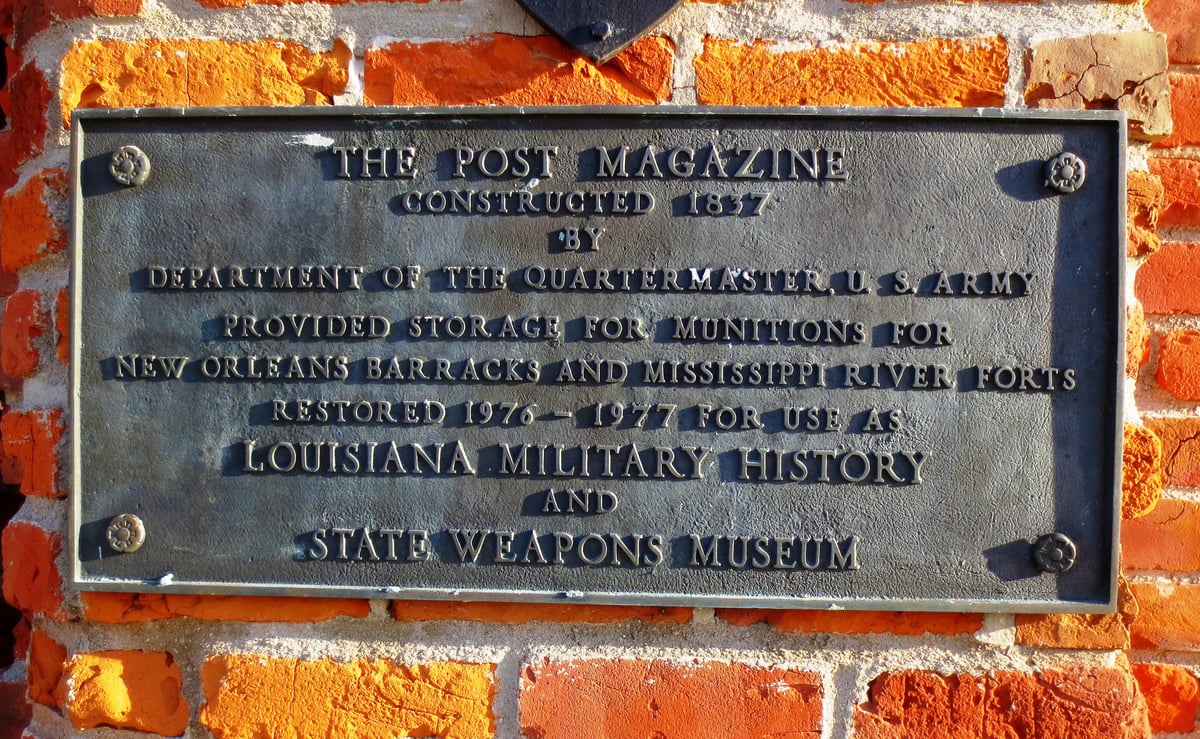
(Author Photo)
The Post Magazine.
Armour

(Author Photo)

(Author Photo)

(Author Photo)
Renault tank, donated by France in 1919.

(NARA Photo)
US Army operating FT-17s on the Western Front, going forward to the battle line in the Forest of Argonne, France, in 1918.
The Renault FT (FT-17) is a French light tank that was the first to have its armament within a fully rotating turret. The Renault FT's configuration, with a crew compartment at the front, engine compartment at the back, and main armament in a revolving turret, became and remains the standard tank layout. Over 3,000 Renault FT tanks were manufactured by French industry, most of them during 1918. Another 950 of an almost identical licensed copy of the FT (the M1917 light tank) were made in the United States, but not in time to take part in the First World War.

(Author Photo)
M3 Stuart tank.

(NARA Photo)
M3 Stuart crews from Company D, 761st Tank Battalion, stand by awaiting call to clean out scattered German machine gun nests in Coburg, Germany, 25 April 1945.

(Author Photo)
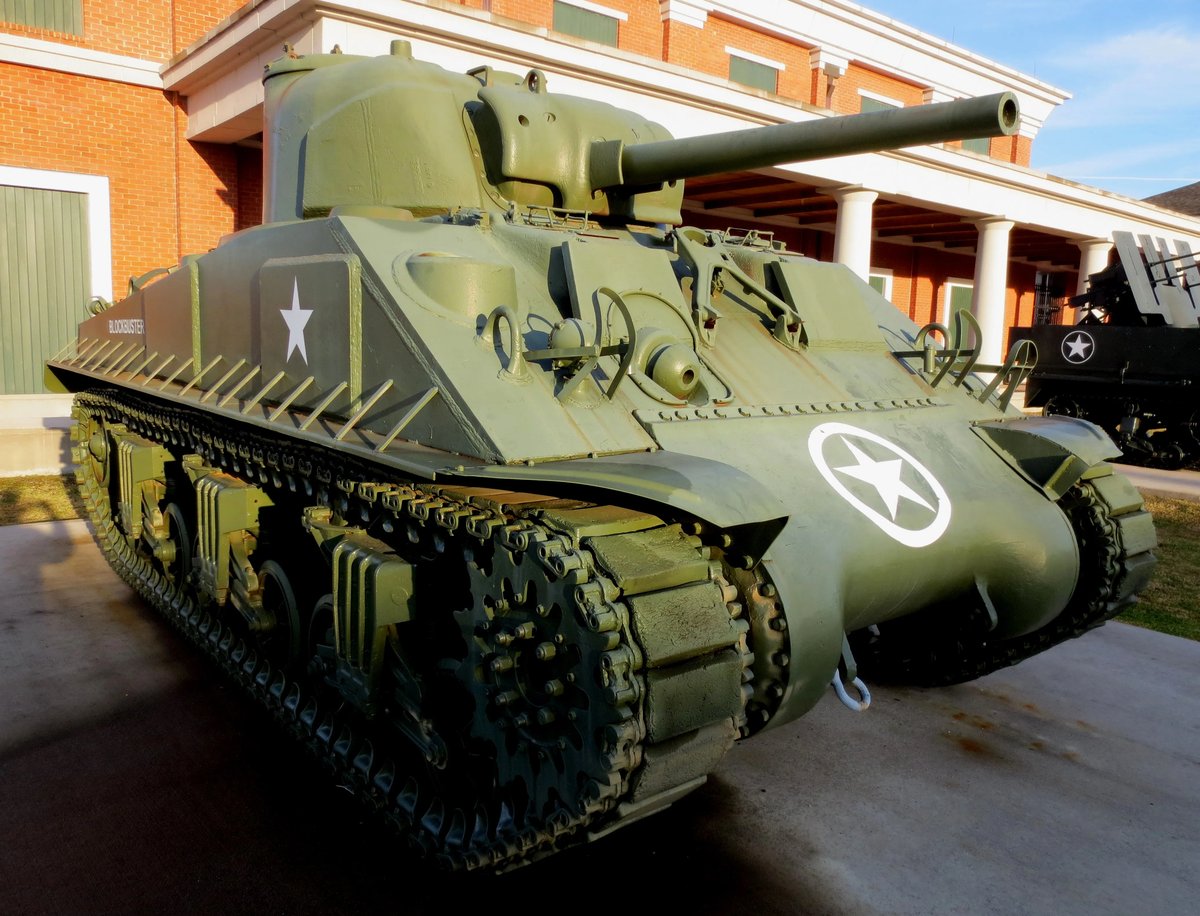
(Author Photo)
M4A3 Sherman tank.

(NARA Photo)
M4A3 Sherman tank, showing the modifications made in 1943, with the addition of patches of appliqué armor to the sides of the turret and hull. This Sherman is also equipped with a Culin hedgerow cutter, a 1944 field improvisation for breaking through the thick hedgerows of the Normandy bocage.
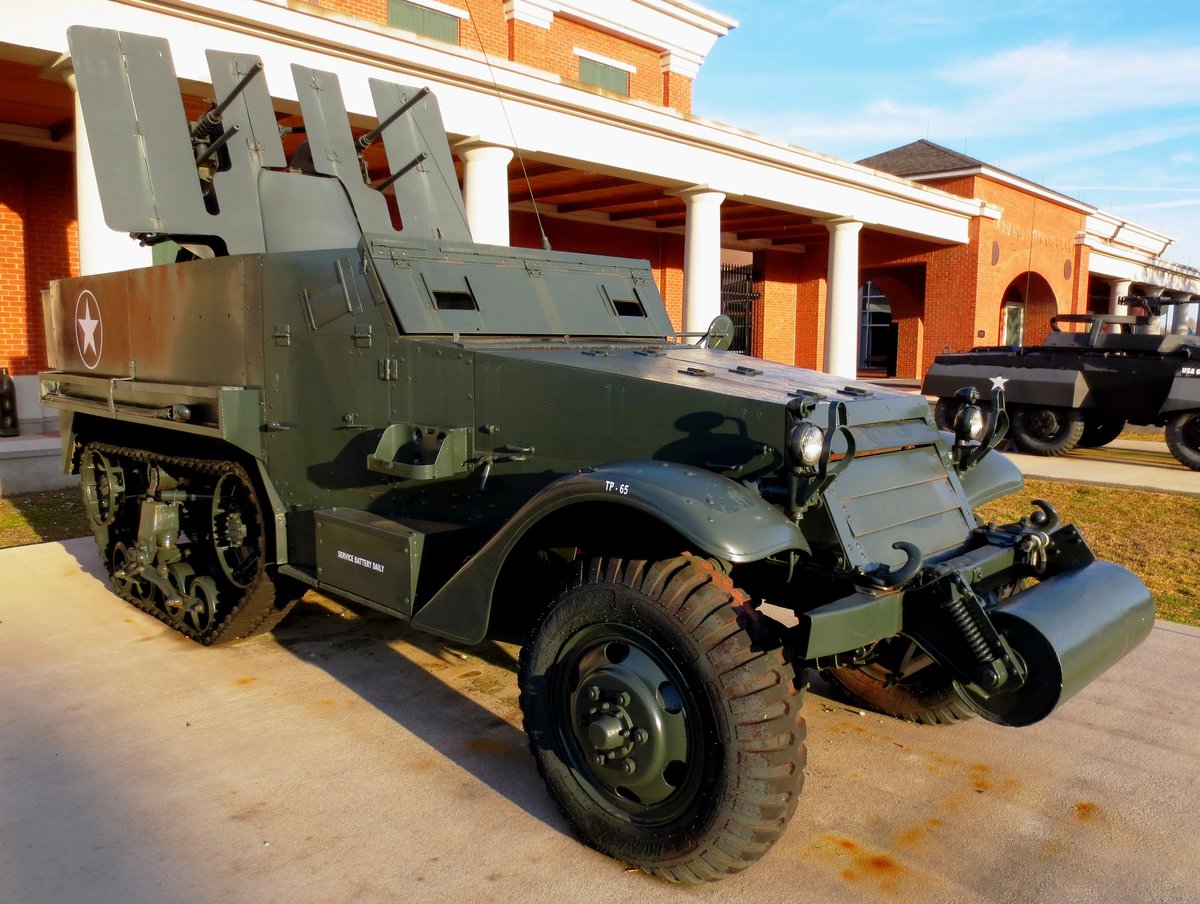
(Author Photo)
M16A1 Multiple Gun Motor Carriage (Half-track), equipped with four 0.5 inch (12.7 mm) M2 Browning machine guns in an M45 Quadmount. 2700 were produced by the White Motor Company from May 1943 to March 1944, with 568 M13 MGMCs and 109 T10 half-tracks being converted into M16s as well.

(United States Army Heritage and Education Center Photo)
Crew firing Quad Mount Cal. 50 Multiple Gun Motor Carriage M-17, 21 AAA, Korea, 1953.

(Author Photo)
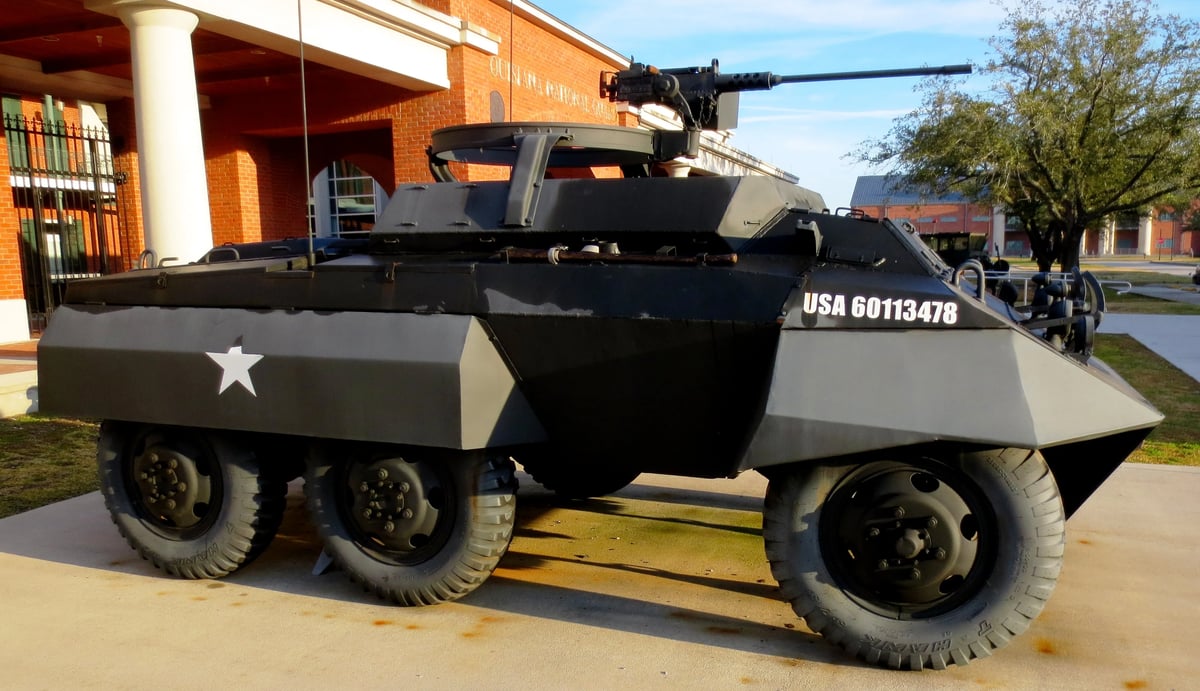
(Author Photo)
M20 Scout Car.

(US Army Photo)
M8 Greyhound Armoured Car, France, ca 1944.
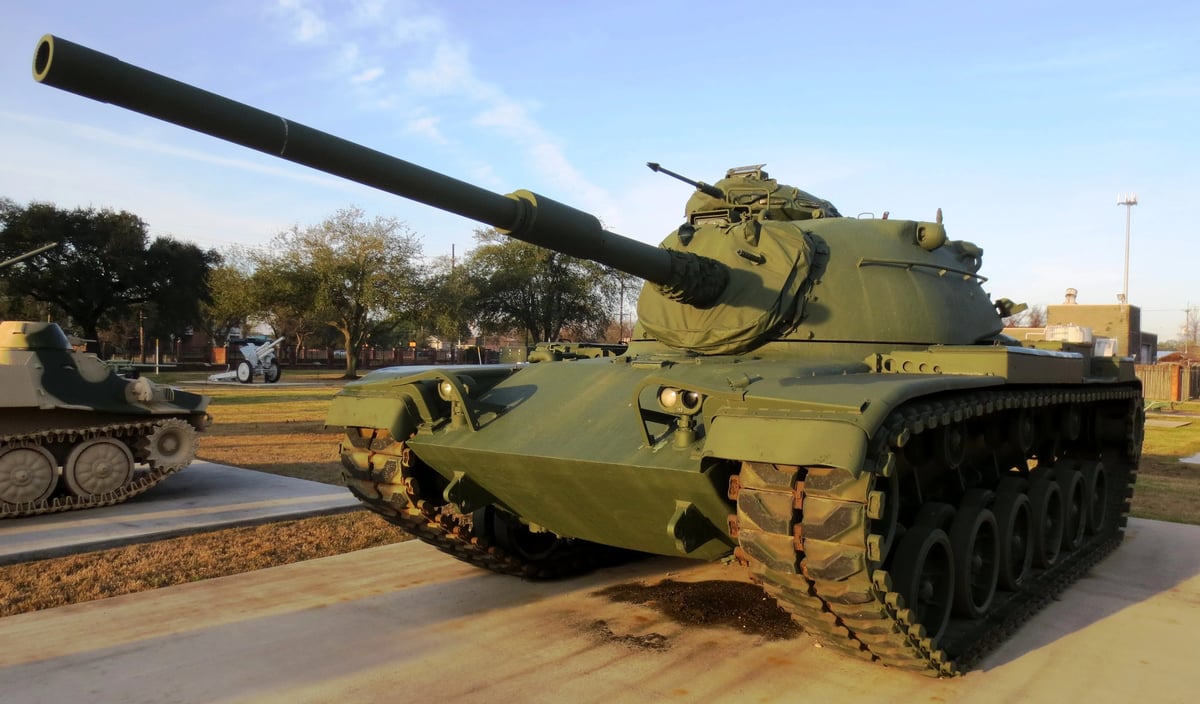
(Author Photo)
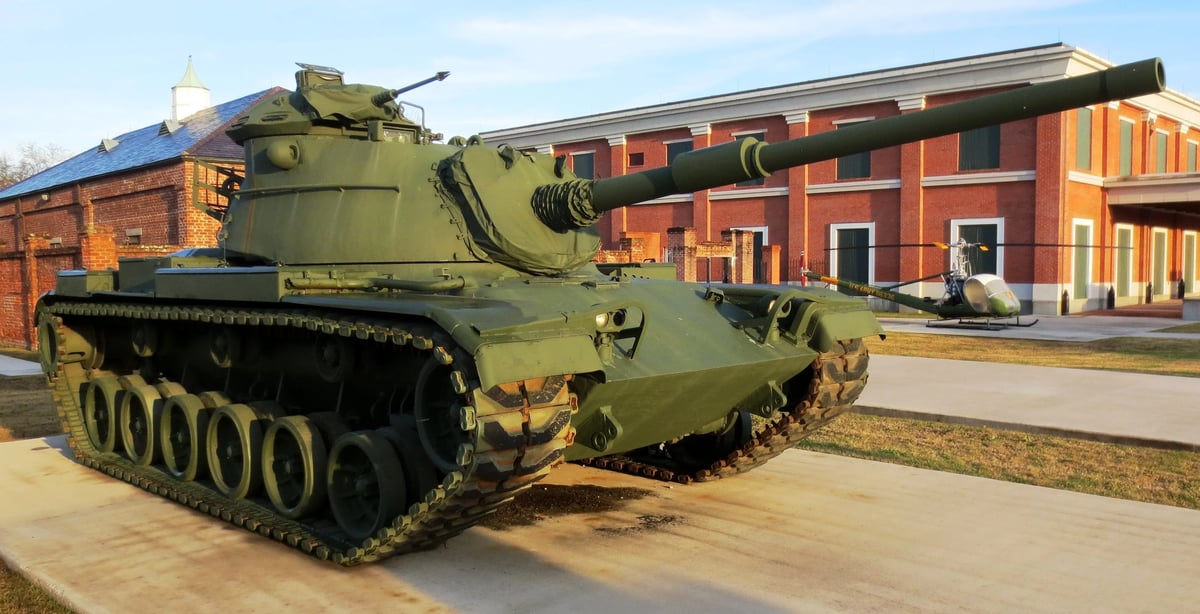
(Author Photo)
M60A3 Main Battle Tank (MBT).
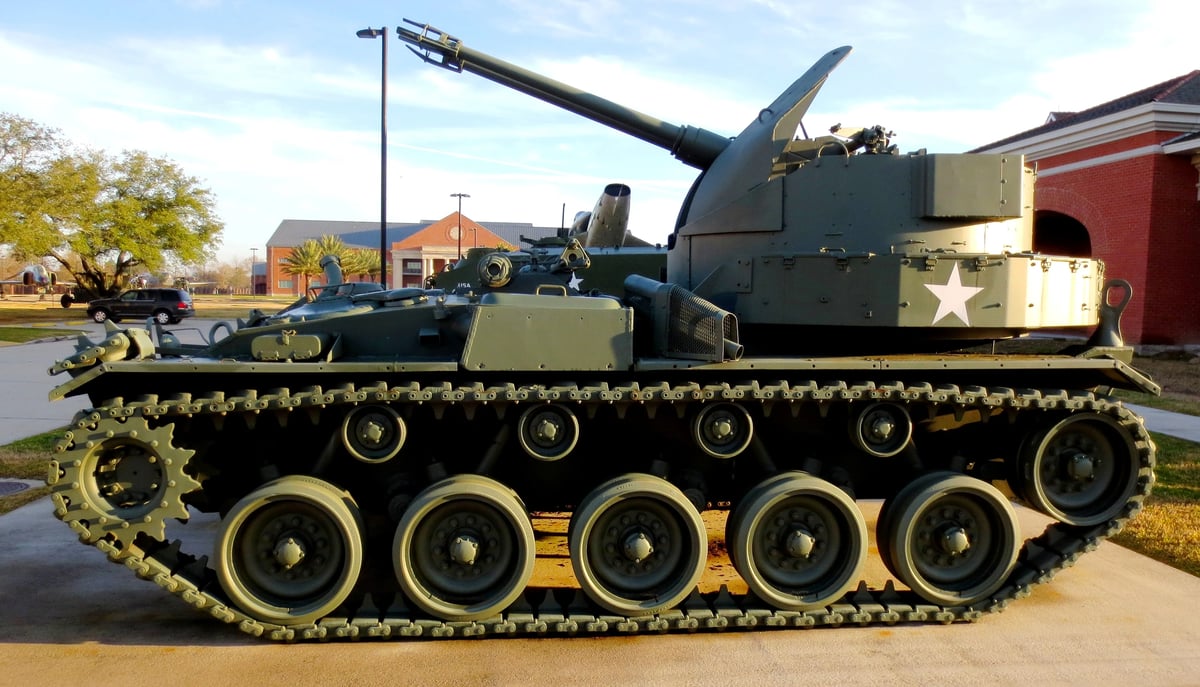
(Author Photo)
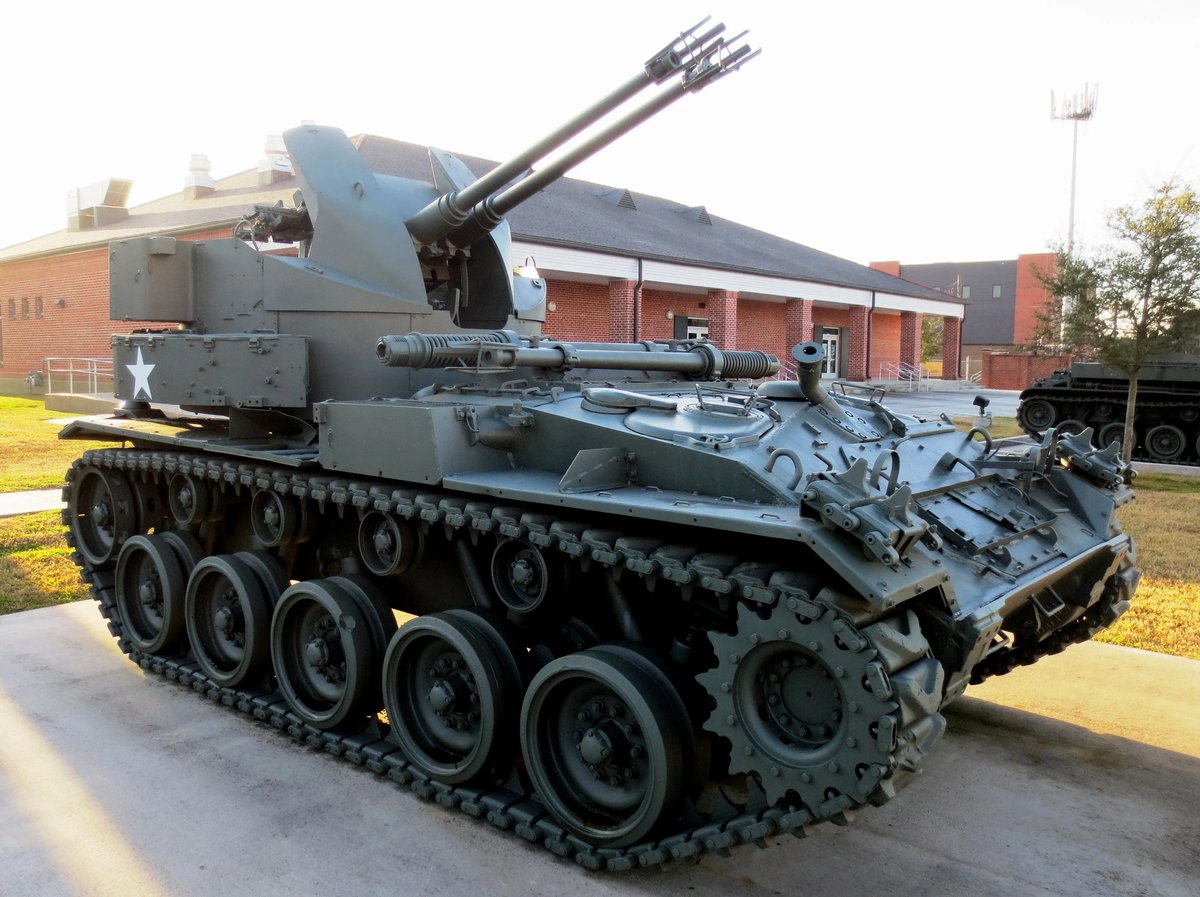
(Author Photo)
M19A1 Duster armed with twin Bofors 40-mm (1.6-inch) Light Anti-Aircraft Guns, No. 1 of 2. Based on the M24 light tank chassis, this AFV was produced by Cadillac and Massey-Ferguson of Canada near the end of 1944.
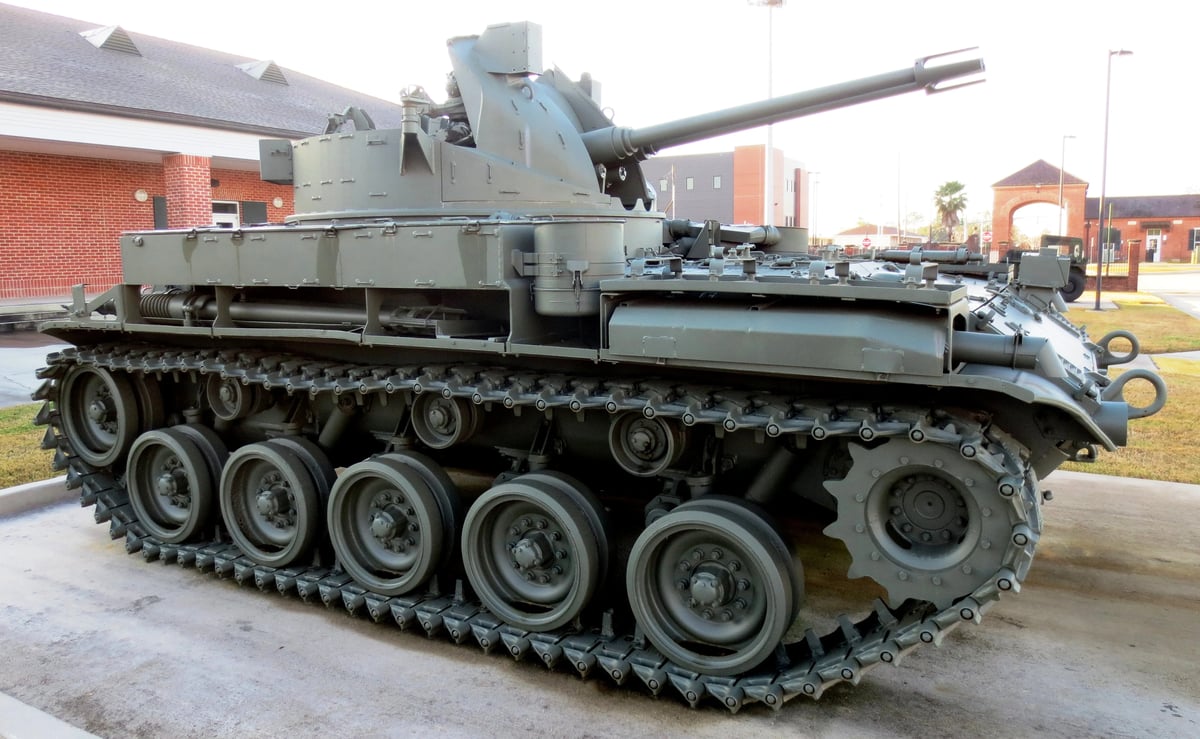
(Author Photo)
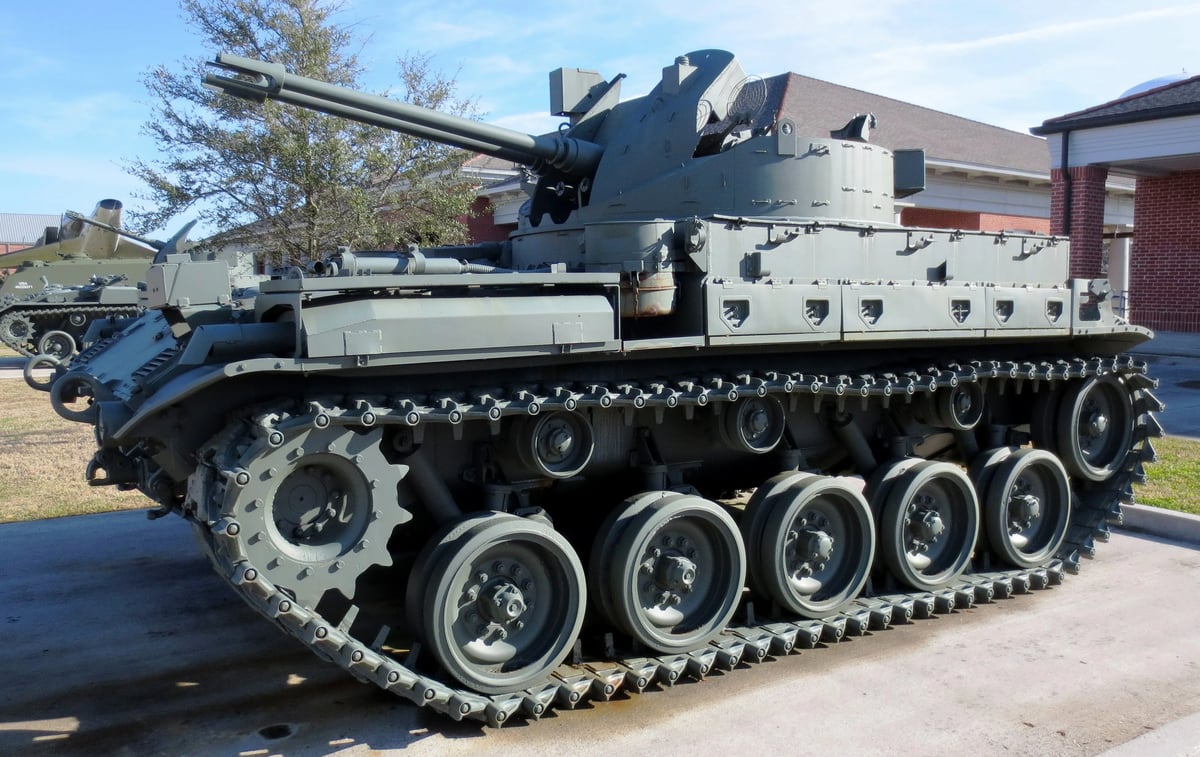
(Author Photo)
M19A1 Duster armed with twin Bofors 40-mm Light Anti-Aircraft Guns, No. 2 of 2.
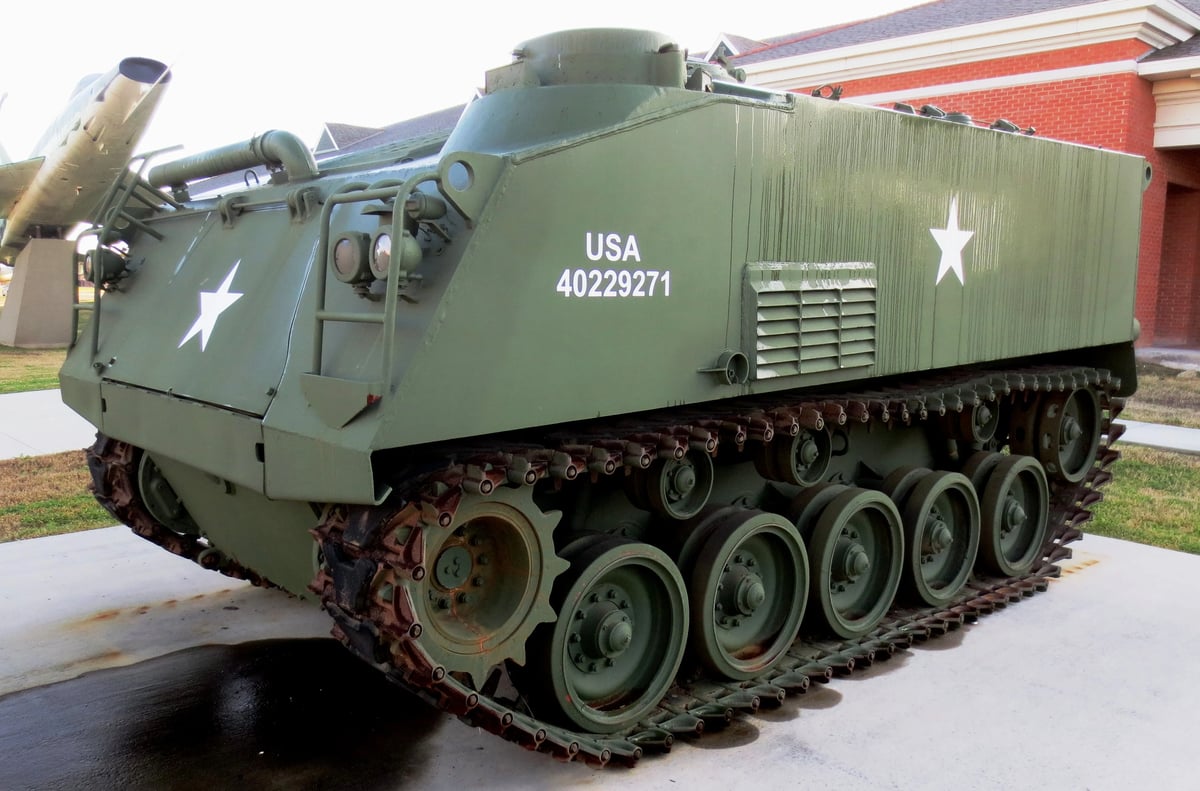
(Author Photo)
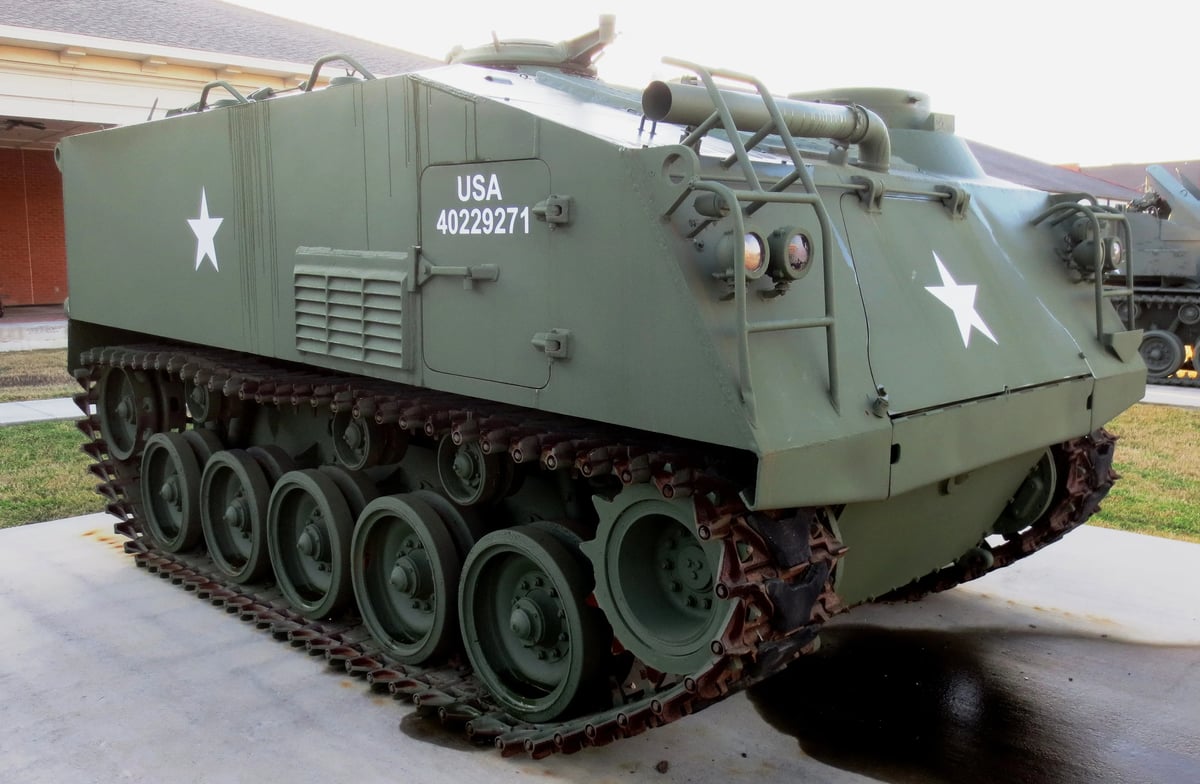
(Author Photo)
M75 APC. Produced between December 1952 and February 1954, this AFV saw service in the Korean War. The M44 was extremely large (51,000 lb combat weight); carrying 24 infantry as well as a driver, bow gunner and vehicle commander. 1,729 M75s were built. The M75 shared many chassis/suspension components with the M41 Walker Bulldog light tank, which was also powered by a Continental air-cooled engine. It had a cross-drive transmission (permitting pivoting, etc.), but was steered through two vertical handles, simulating the laterals of earlier vehicles controlled by track clutching/braking.
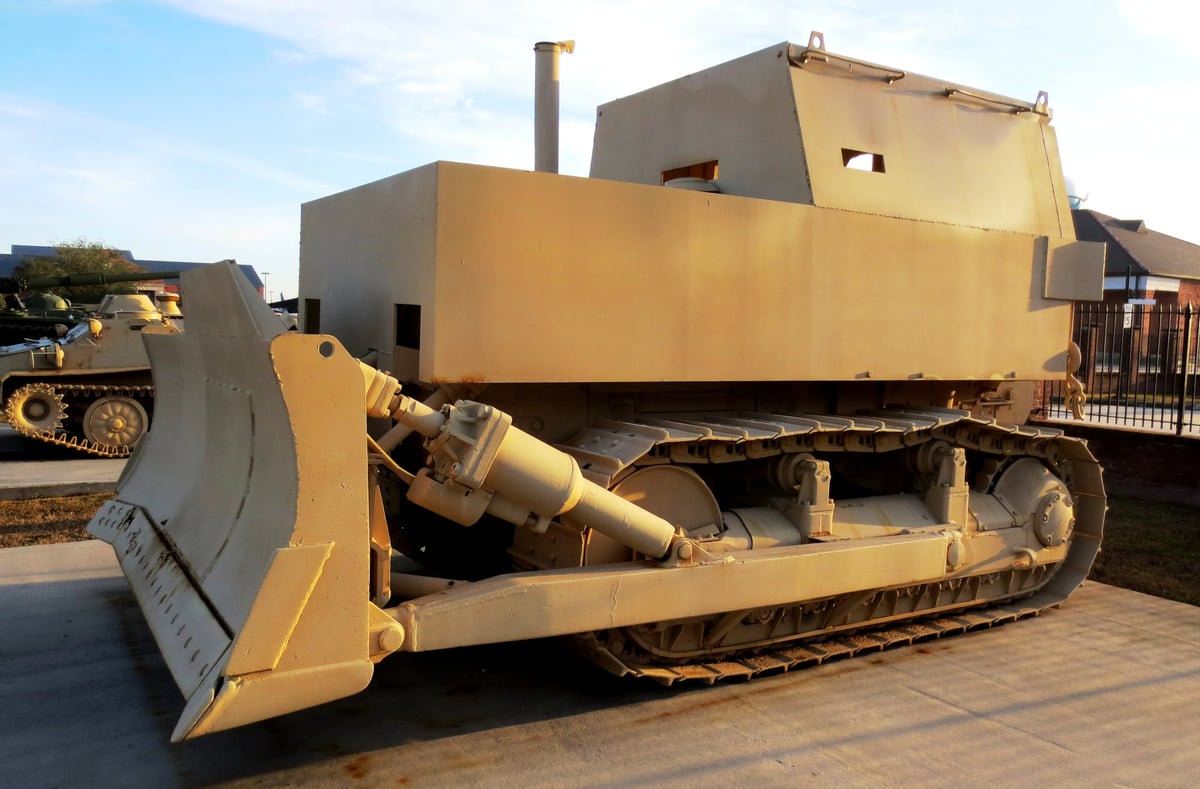
(Author Photo)
D7-K bulldozer.
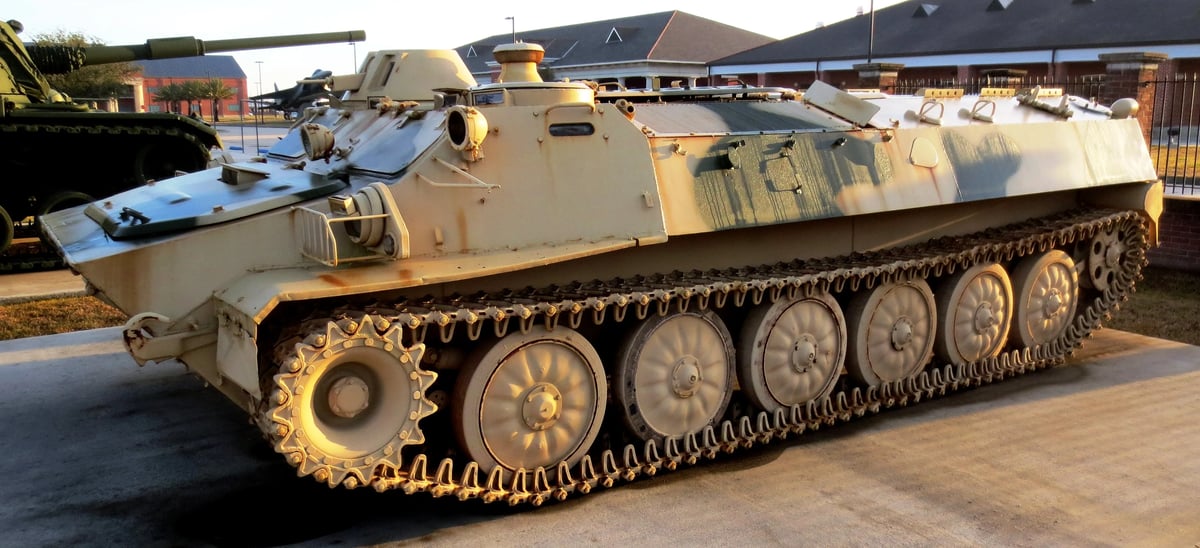
(Author Photo)

(Author Photo)
Soviet-built MT-LB (Multi-Purpose Towing Vehicle Light Armoured), captured in Iraq. The crew, a driver and a commander/gunner sit in a compartment at the front of the vehicle, with the engine behind them. A compartment at the rear enables up to 11 infantry to be carried or a cargo of up to 2,000 kg. A load of 6,500 kg can be towed. The vehicle is fully amphibious, being propelled by its tracks in the water.
A small turret at the front of the vehicle fits a 7.62 mm PKT machine gun with 360-degree manual traverse and an elevation of −5 to +30 degrees. The vehicle is lightly armored against small arms and shell splinters with a thickness of 3 to 10 mm of steel with a maximum of 14 mm for the turret front. The infantry compartment has two hatches over the top, which open forwards. There are four firing ports, with one on either side of the hull, the other two in the rear twin doors of the infantry compartment.
The driver is provided with a TVN-2 infra-red periscope, which in combination with the OU-3GK infra-red/white light searchlight provides a range of about 40 m. All vehicles include an NBC system.
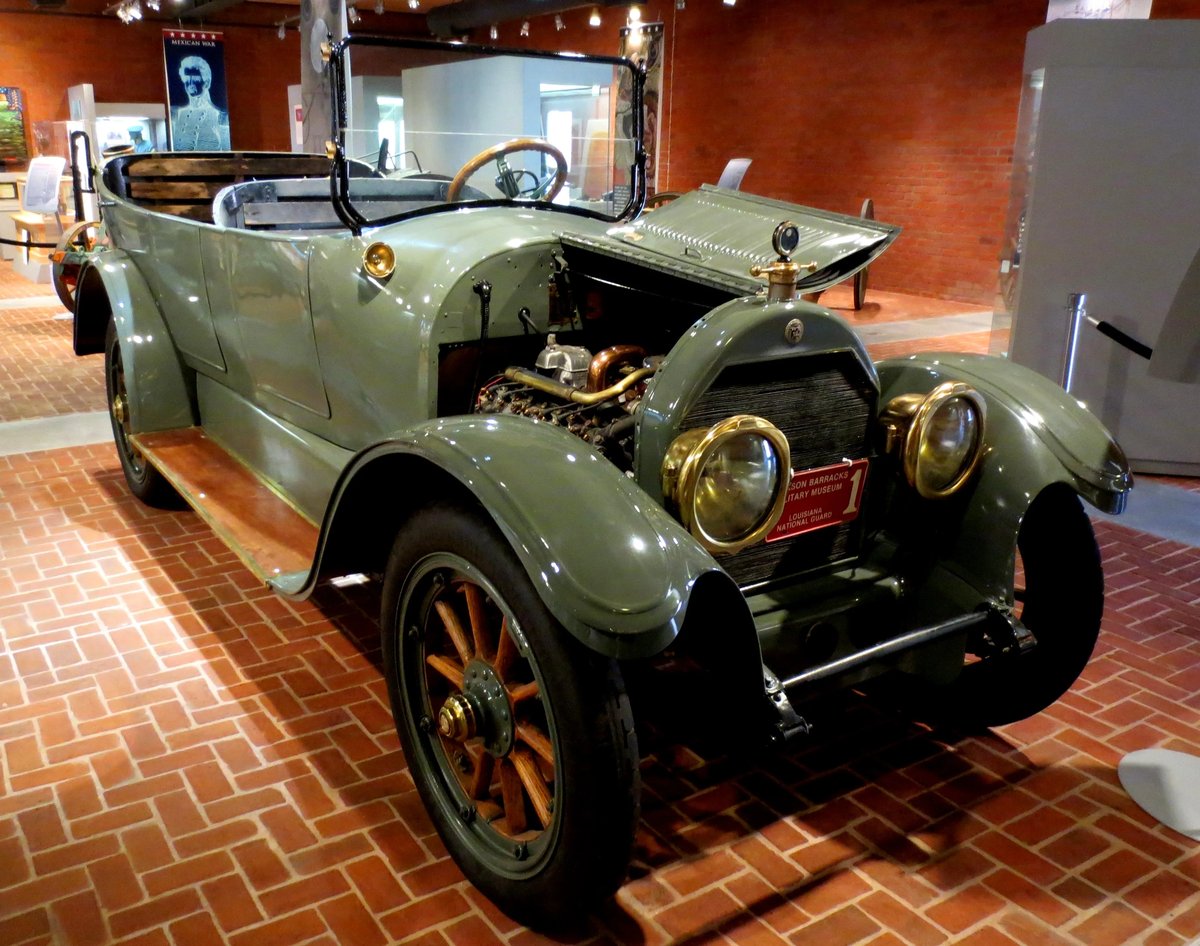
(Author Photo)

(Author Photo)
1917 Cadillac staff car.

(NYT Photo)
1918 Cadillac Type 57 US Army staff car in service during the First World War.
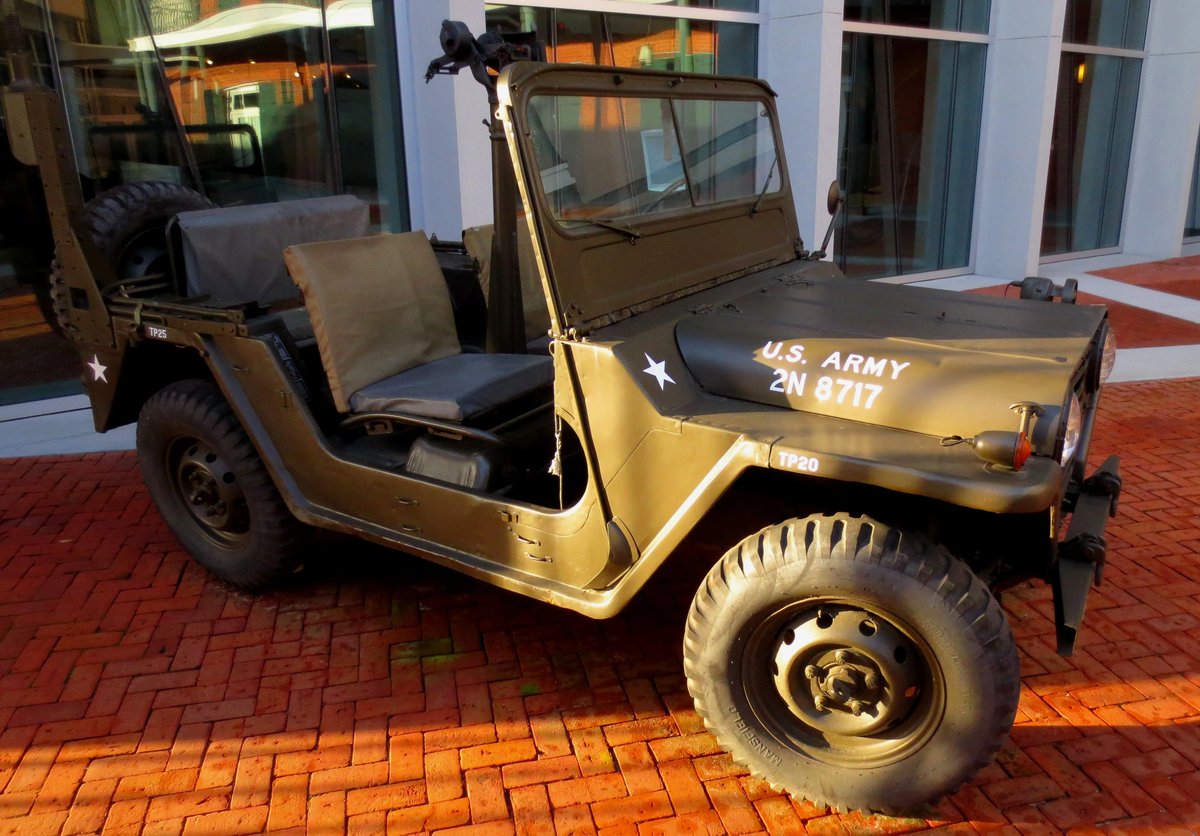
(Author Photo)
Willys MB Jeep. The Willys MB and the Ford GPW, both formally called the U.S. Army Truck, 1⁄4-ton, 4×4, Command Reconnaissance, were highly successful off-road capable, light, military utility vehicles, built in large numbers to a standardized design, from 1941 to 1945, for the Allied forces in the Second World War.

(US Army Signal Corps Photo)
General Dwight D. Eisenhower in his jeep during the liberation of Lower Normandy, summer of 1944. Lieutenant General Omar Bradley is in the backseat. Eisenhower later wrote that the jeep was "one of the six most vital" U.S. vehicles that helped to win the war.

(Author Photo)
U.S. Army 1967 Kaiser M725 Ambulance, 15026347. Built on a 1-¼-ton Jeep Gladiator M715 chassis, this Vietnam era rescue wagon could transport up to five stretchered patients or eight upright soldiers. The medical transport featured air ventilators, a gas heater, a surgical lamp, and a door that separated the front cabin from the rear cargo hold. It is powered by a stout Jeep Tornado 230 cubic inch OHC inline-six cylinder engine, producing 132 horsepower and 210 pound feet of torque. The 5,180-plus pound rig could attain 60 mph. It is equipped with sturdy front and rear straight axles equipped with a Warner T-98 four-speed manual transmission, leaf spring suspension, and hydraulic four-wheel drum brakes. Wheelbase: 165 inches.
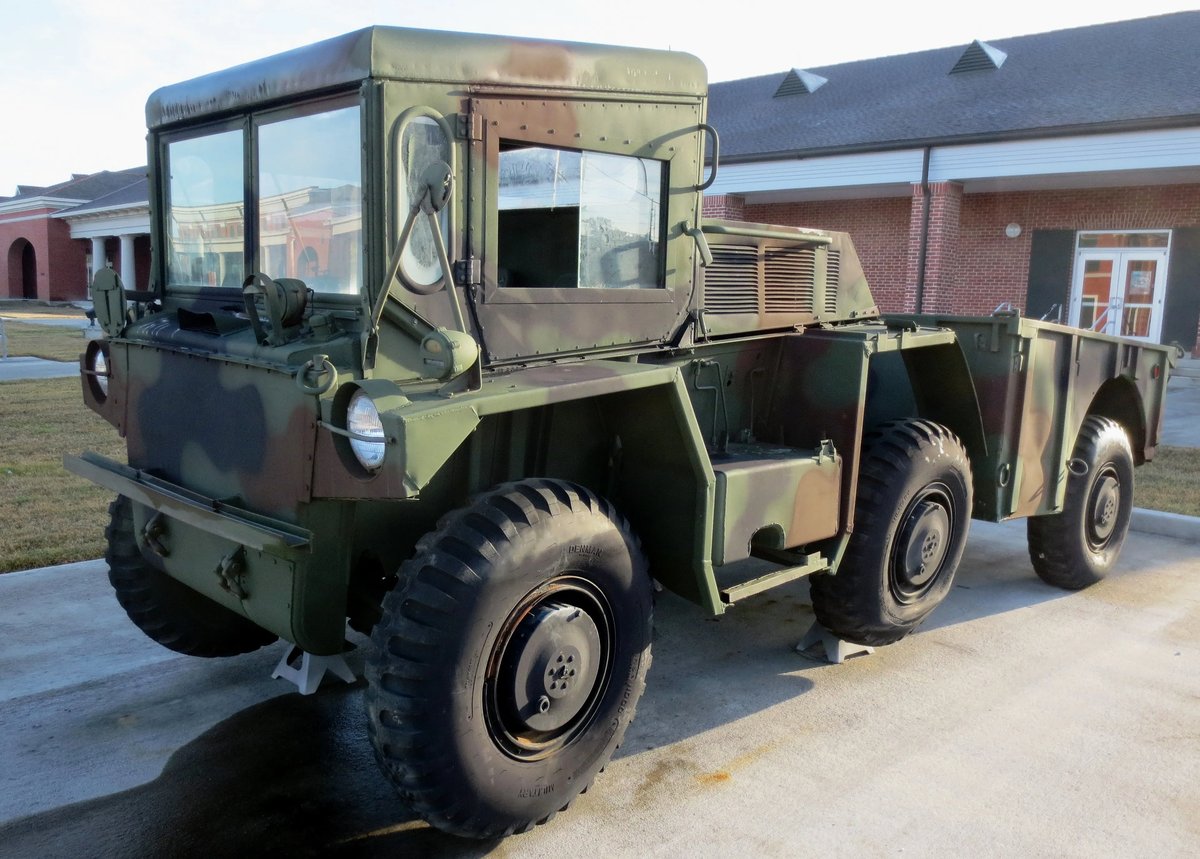
(Author Photo)
M561 Gamma Goat, six-wheel drive semi-amphibious off road vehicle originally developed for use by the US military in the Vietnam War. The Goat used an articulated chassis, so that from distance it appears to be a four-wheel drive vehicle pulling a two-wheel trailer, but it is a single six-wheel vehicle with a four-wheel steering arrangement with the front and rear wheels turning in opposite directions. It was famous for its ability to travel over exceptionally rough and muddy terrain.
The vehicle's nickname came from two sources: "Gama" from the name of the inventor of its powered articulated joint, Roger Gamaunt, and "Goat" for its mountain goat-like off-road ability. Its military designation was M561, 6×6 tactical 1¼-ton truck. There was also an ambulance version known as the M792.
Artillery
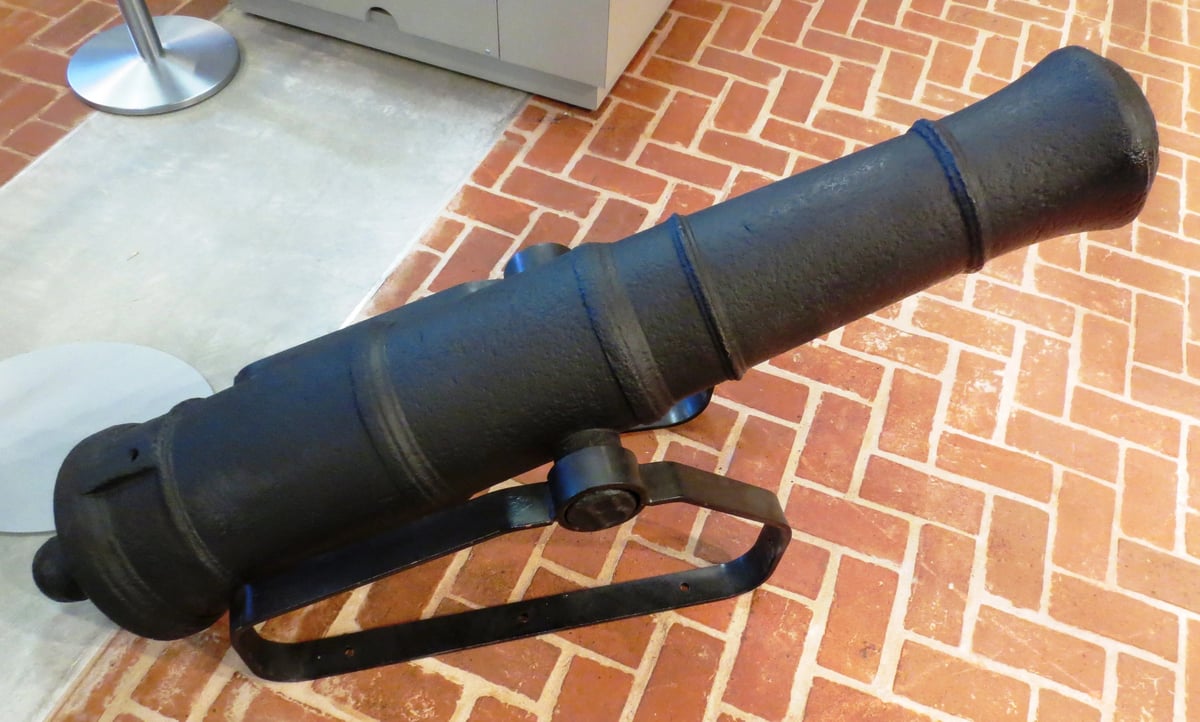
(Author Photo)
Smoothbore Muzzleloader Gun, (possibly 2-pounder).

(Author Photo)
Smoothbore Muzzleloader Gun, (possibly 2-pounder).
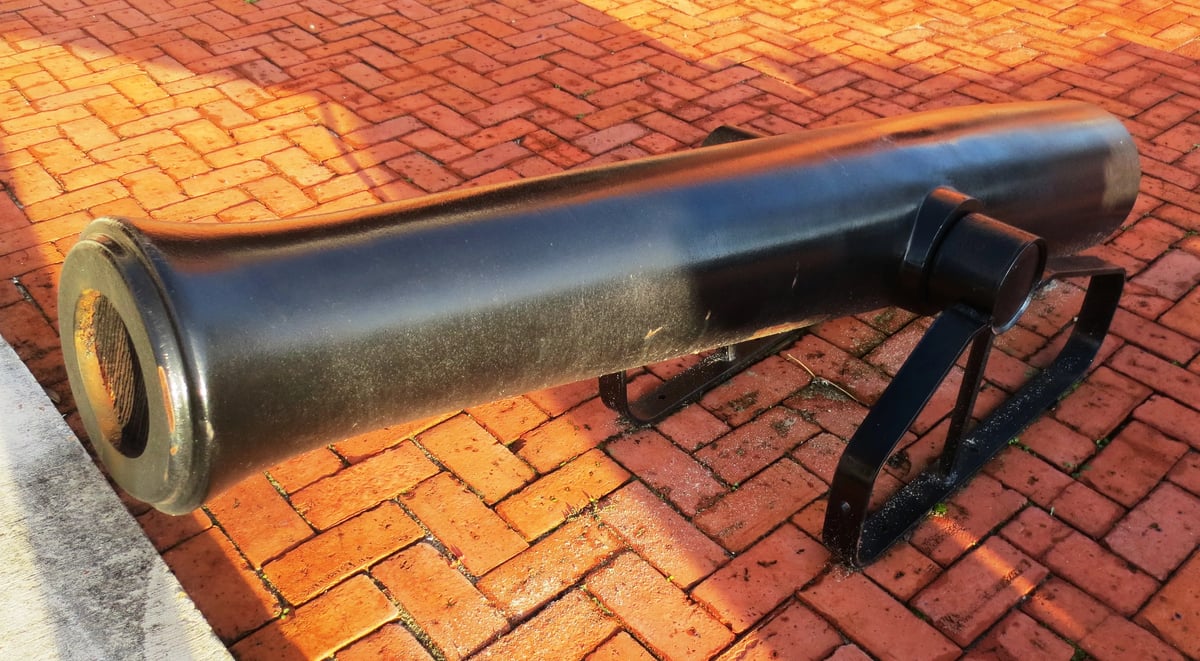
(Author Photo)
Smoothbore Muzzleloader Gun, (possibly 2-pounder).
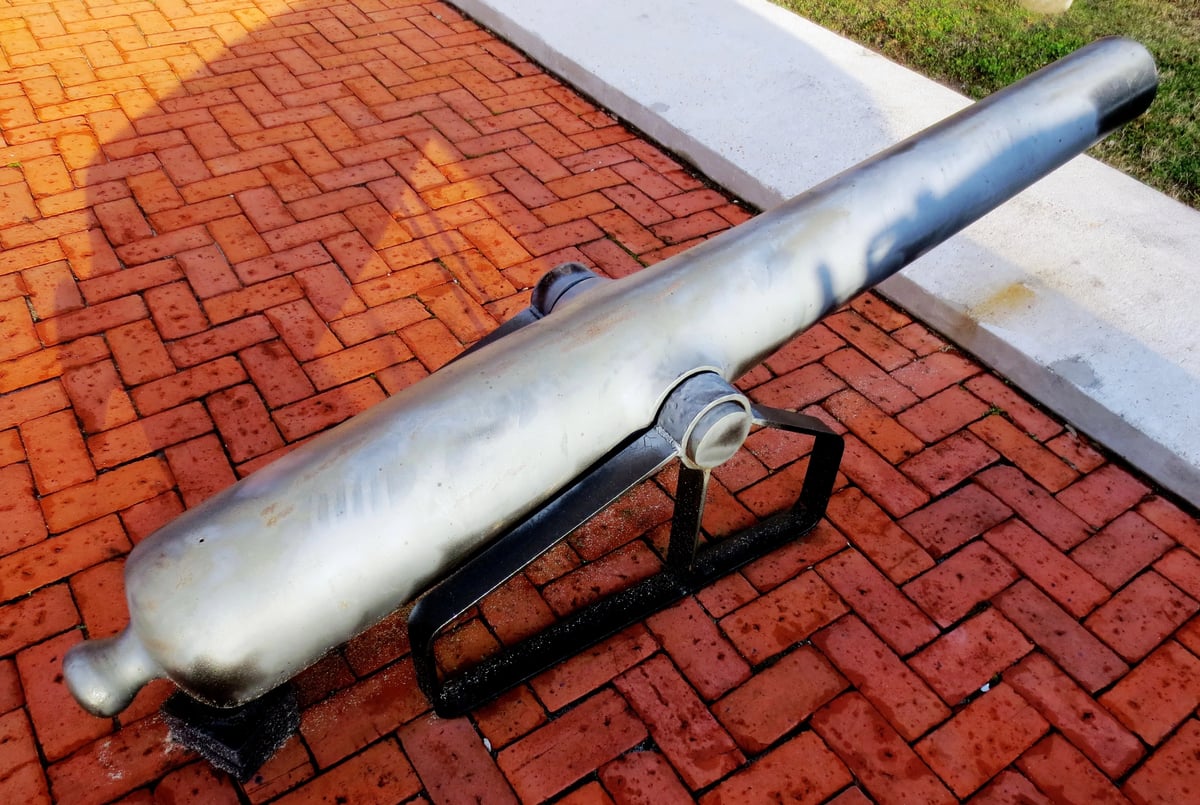
(Author Photo)
Smoothbore Muzzleloader Gun, (possibly 6-pounder).
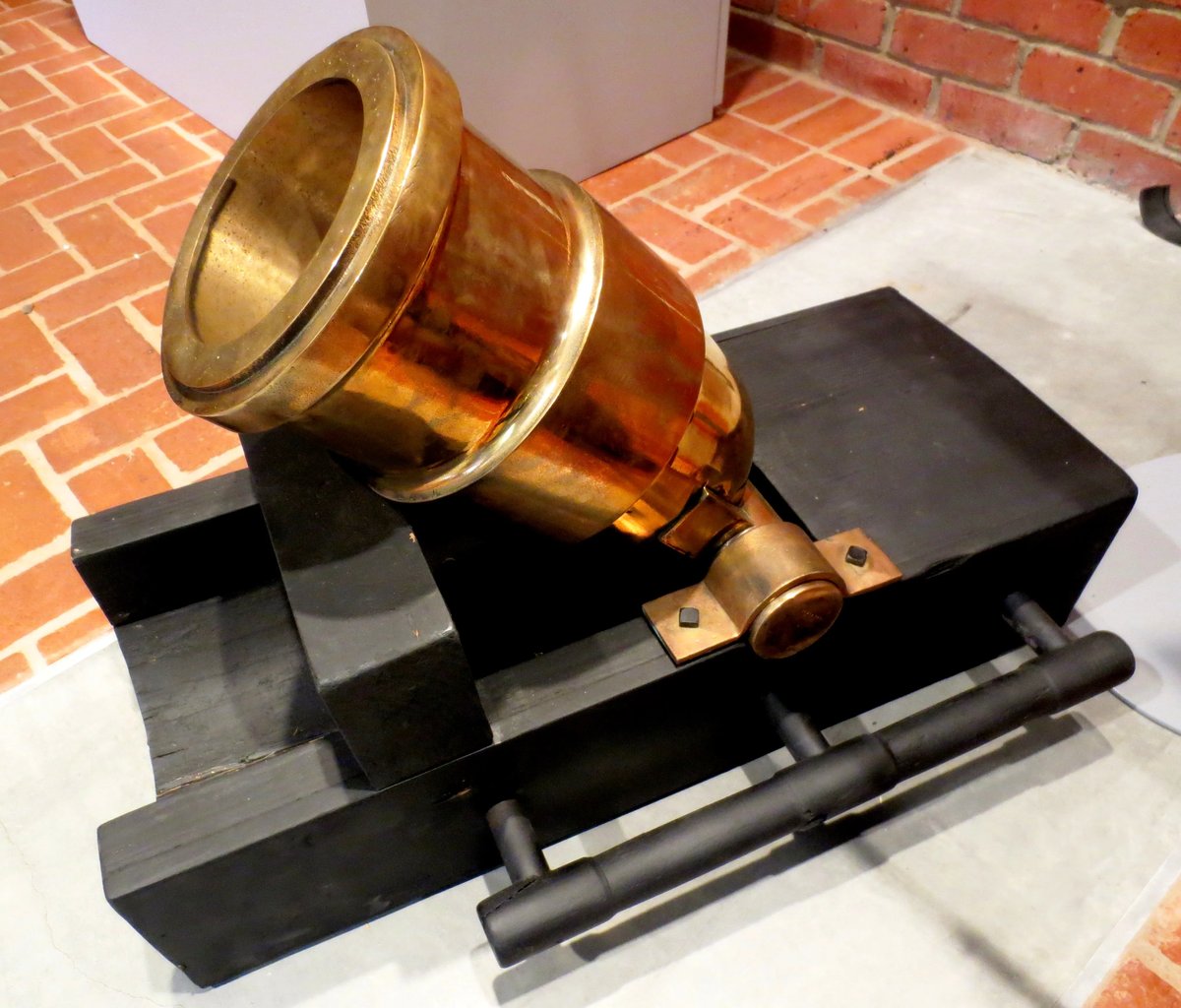
(Author Photo)
Bronze Coehorn replica Mortar, (possibly 10-inch).
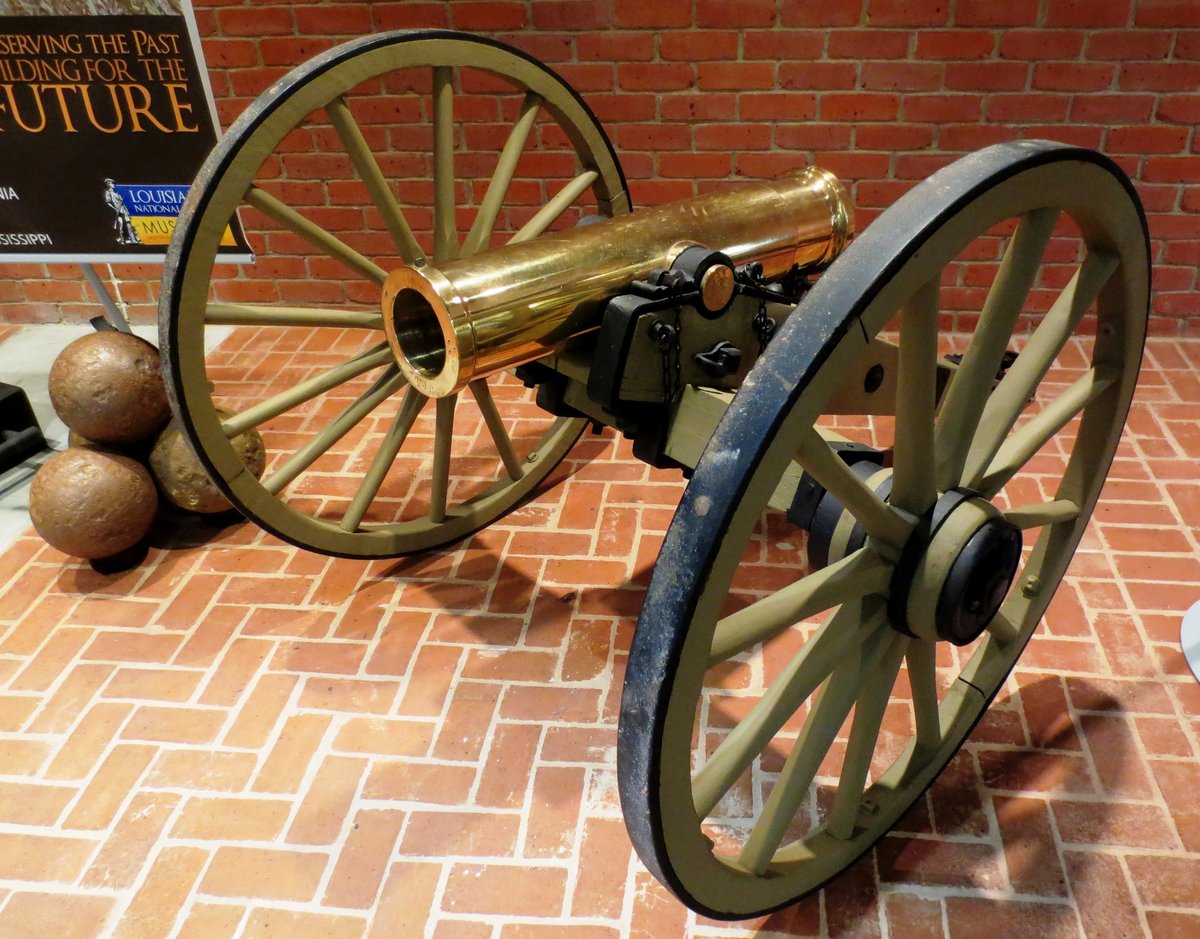
(Author Photo)
Bronze M1835 Mountain Howitzer mounted on a wheeled gun wood carriage, No. 1 of 2.
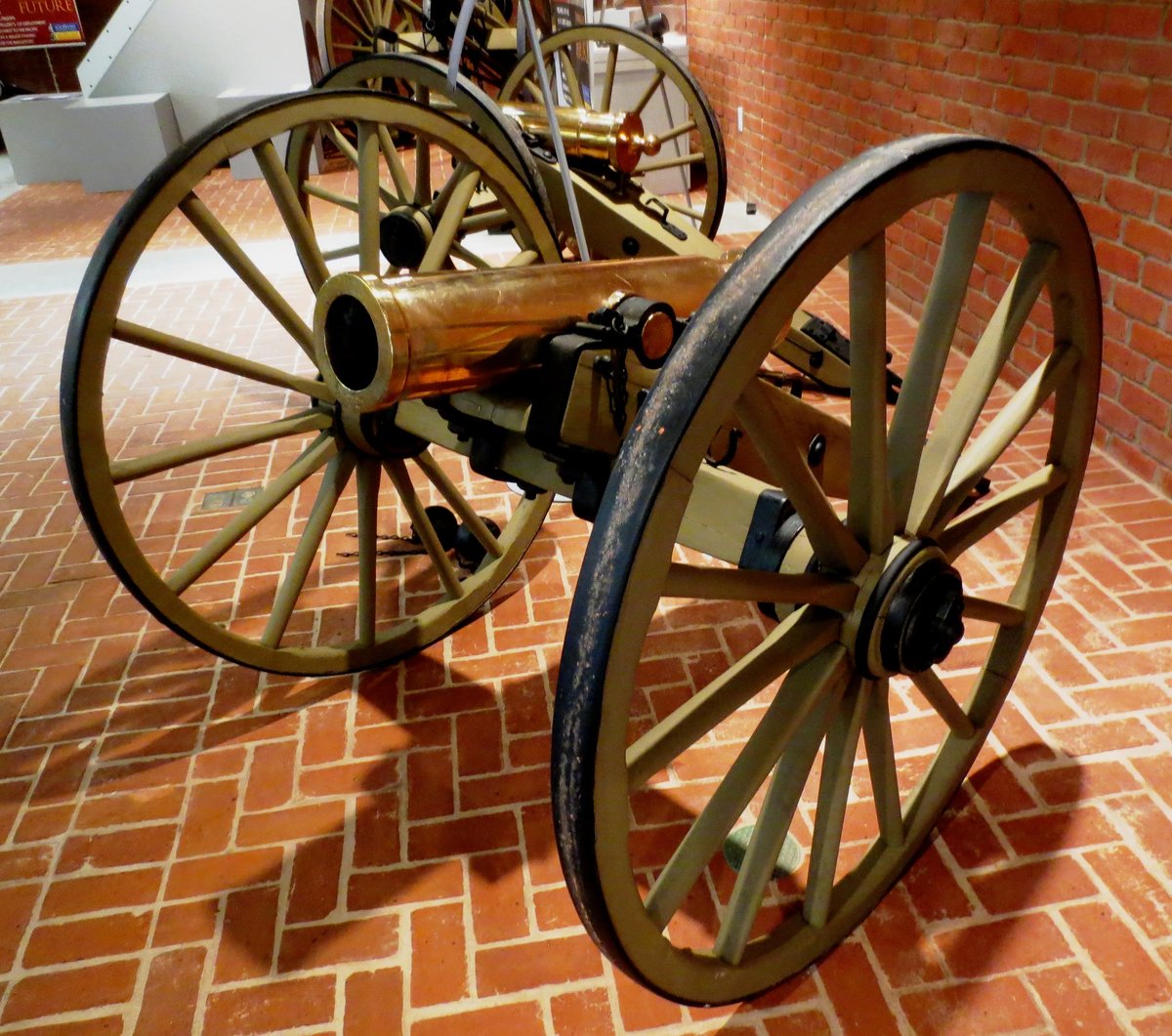
(Author Photo)
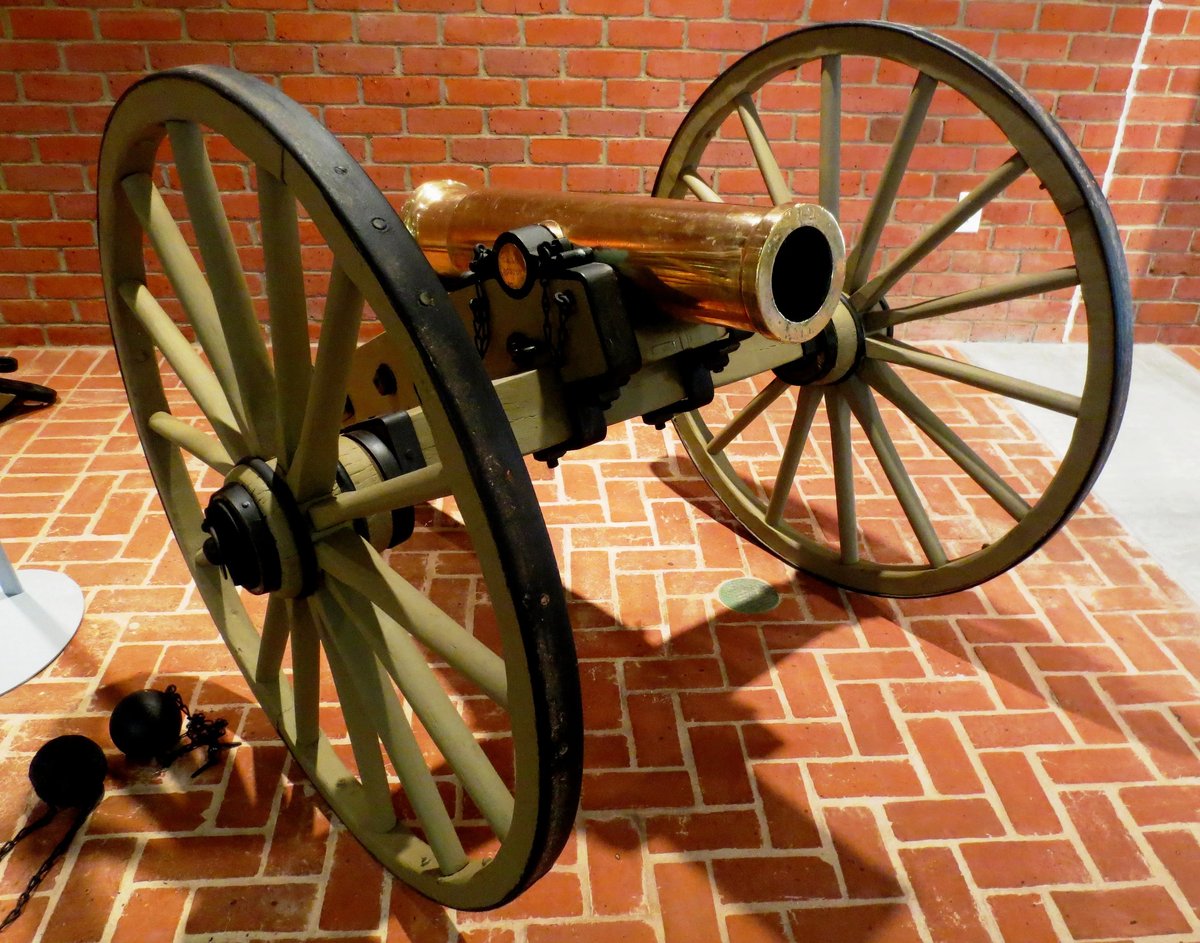
(Author Photo)
Bronze M1835 Mountain Howitzer, mounted on a wheeled gun wood carriage, No. 2 of 2.
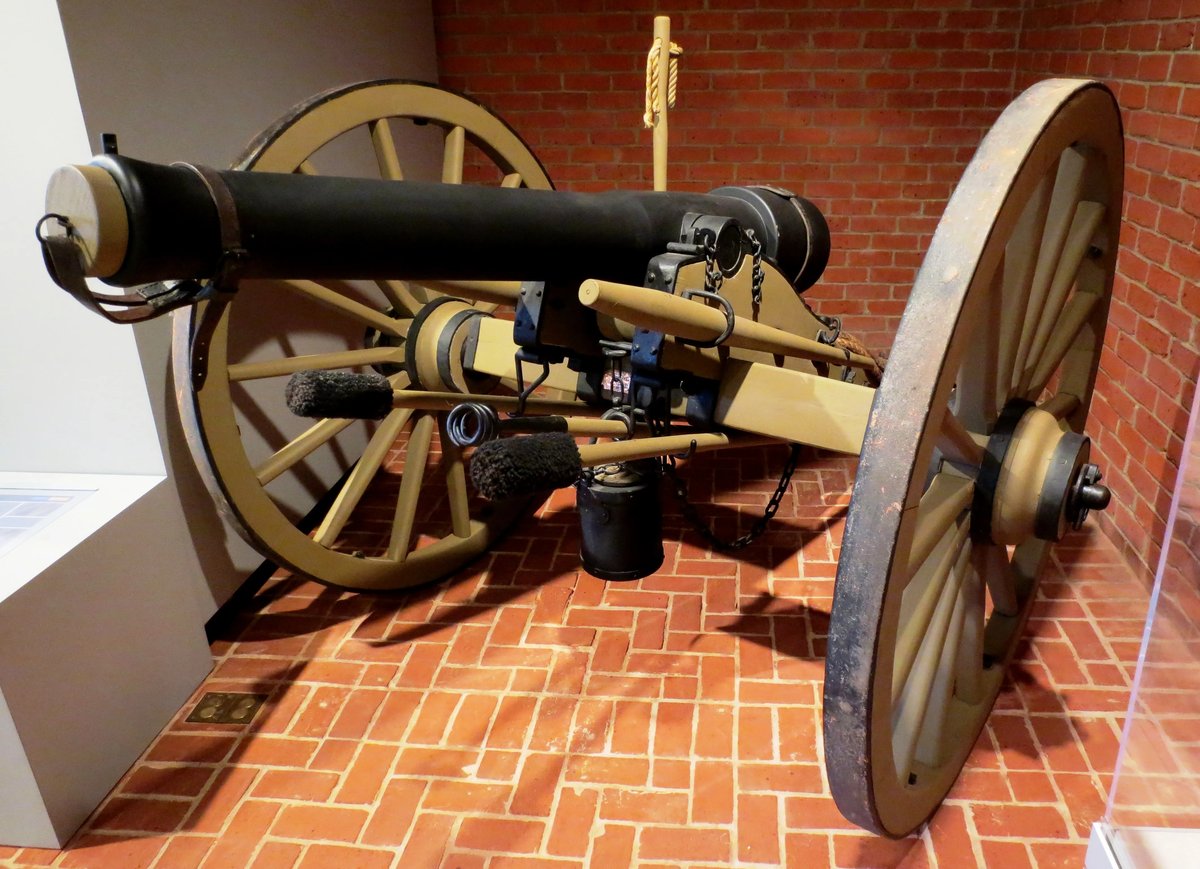
(Author Photo)
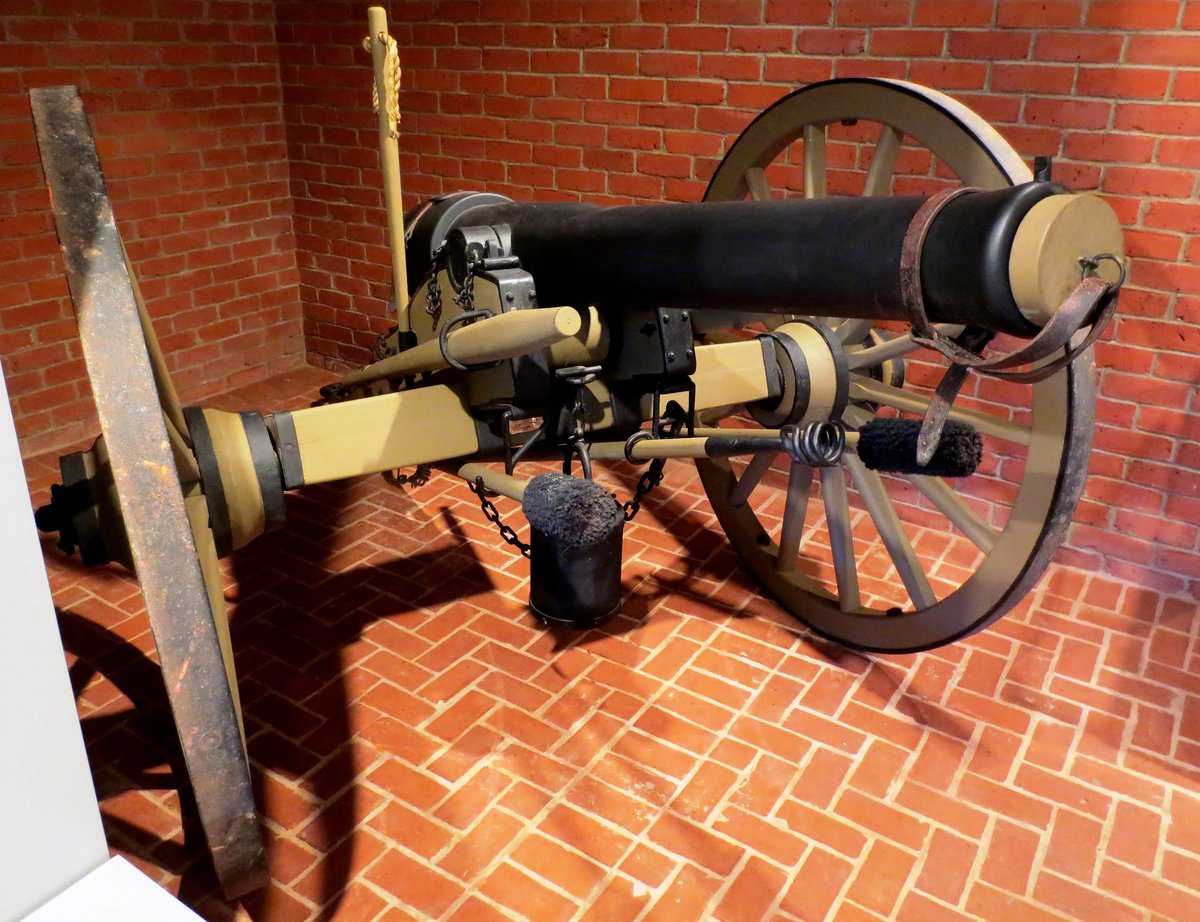
(Author Photo)
M1861 10-pounder Parrot Rifle mounted on a wheeled gun wood carriage.
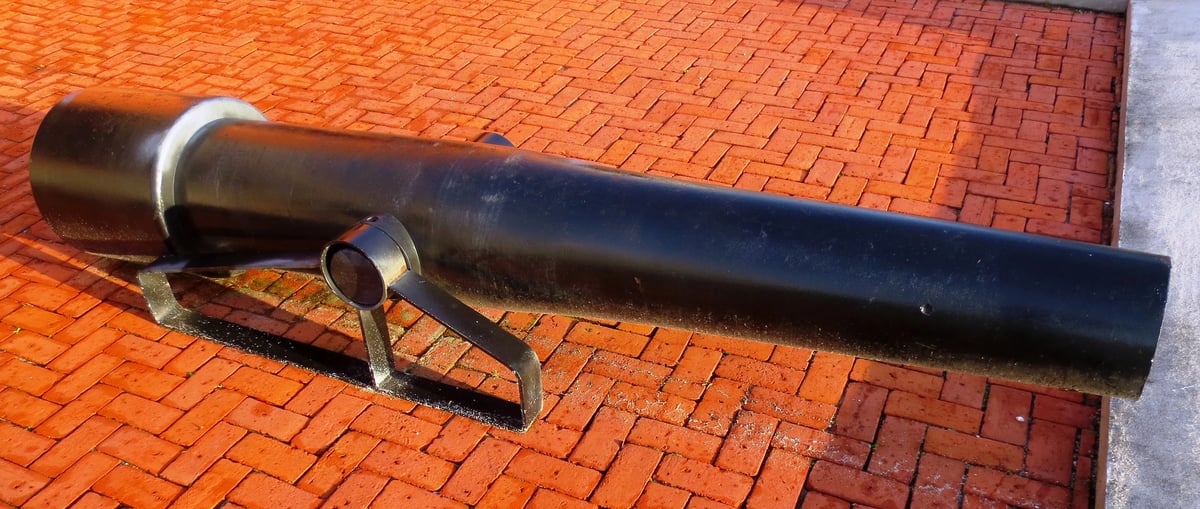
(Author Photo)
Possible 10-pounder Parrot Rifle, unmounted.
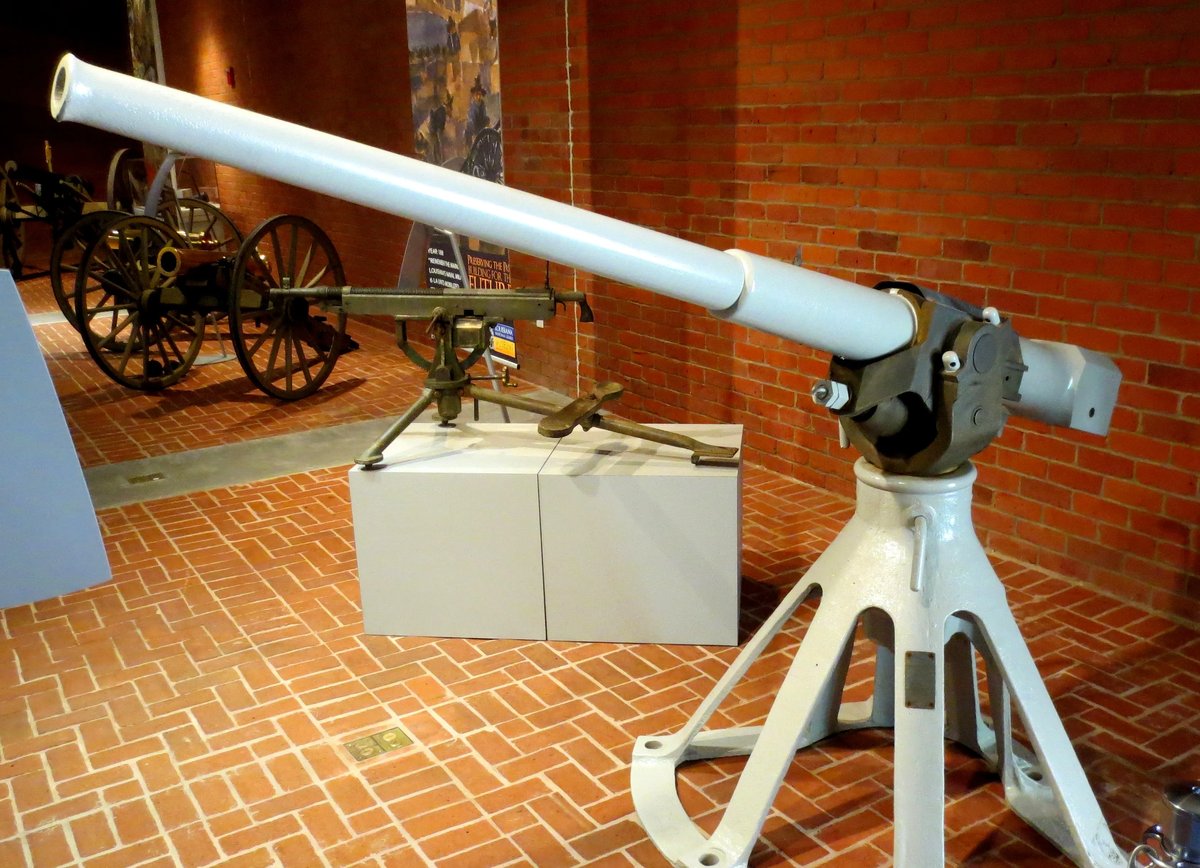
(Author Photo)
US Naval Gun Factory 6-pounder Mk. III Naval Gun.

(Author Photo)
US M1877 (French 75) Field Gun mounted on a US Field Carriage.
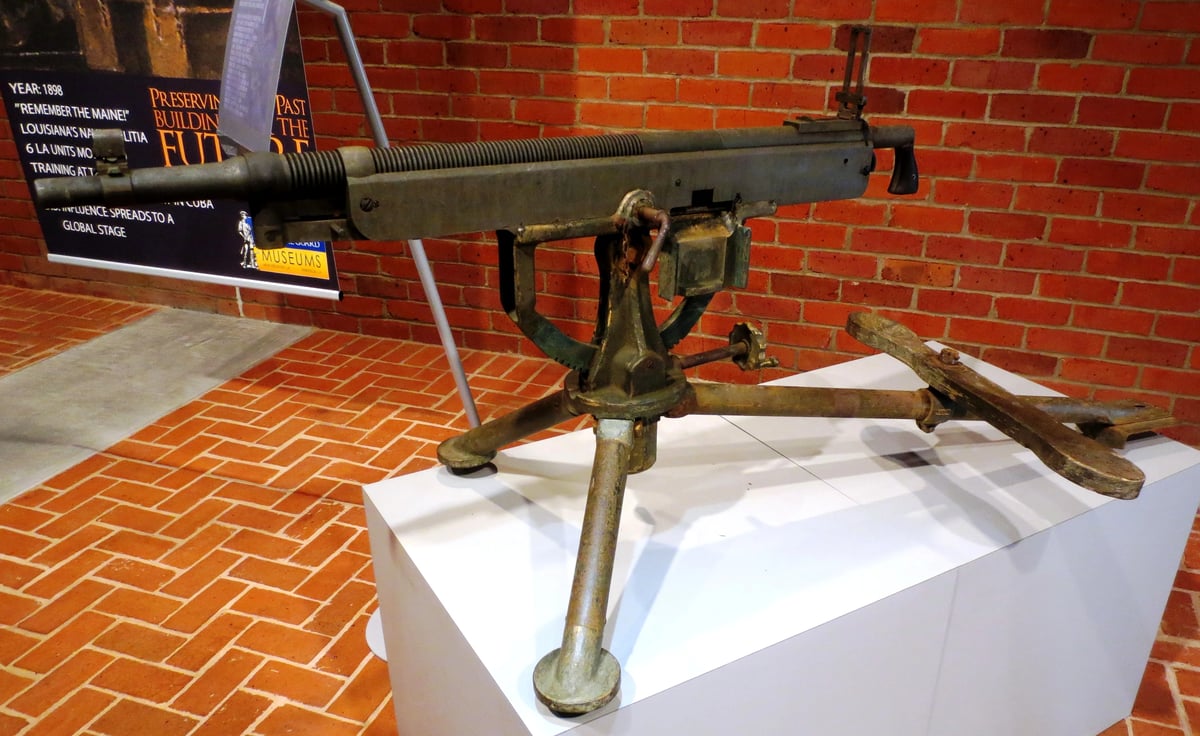
(Author Photo)
M1895 Colt-Browning MG.
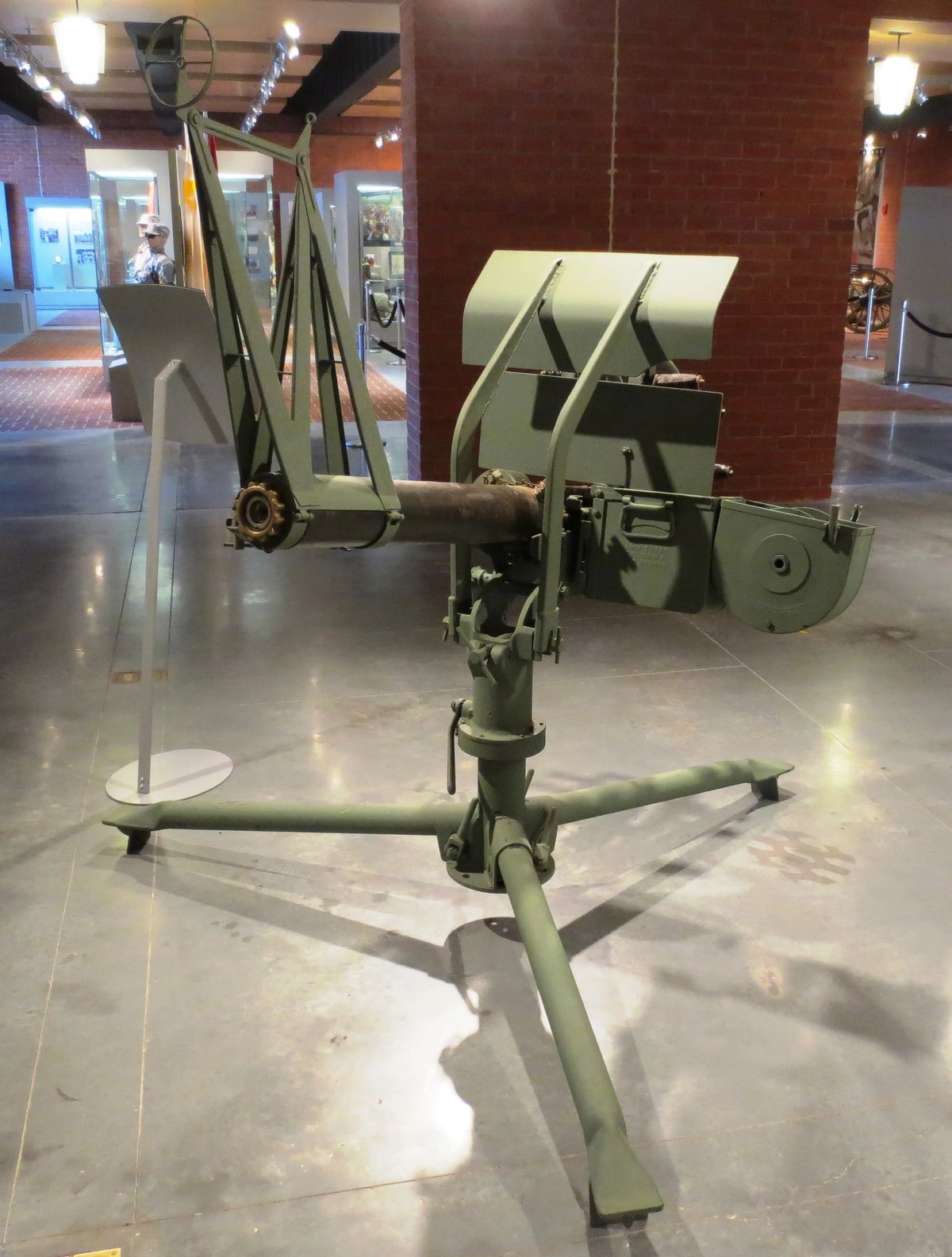
(Author Photo)
US 30-cal AAMG.

(Author Photo)
US 90-mm M2 Heavy AA-Gun with searchlight.
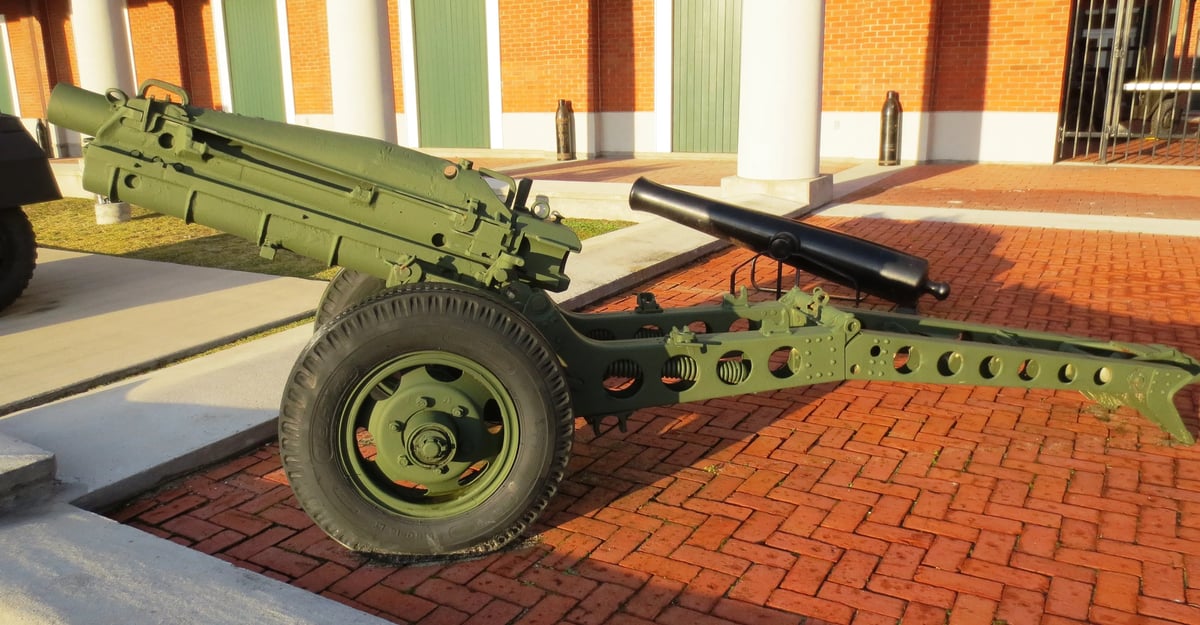
(Author Photo)
US M1 75-mm Pack Howitzer.
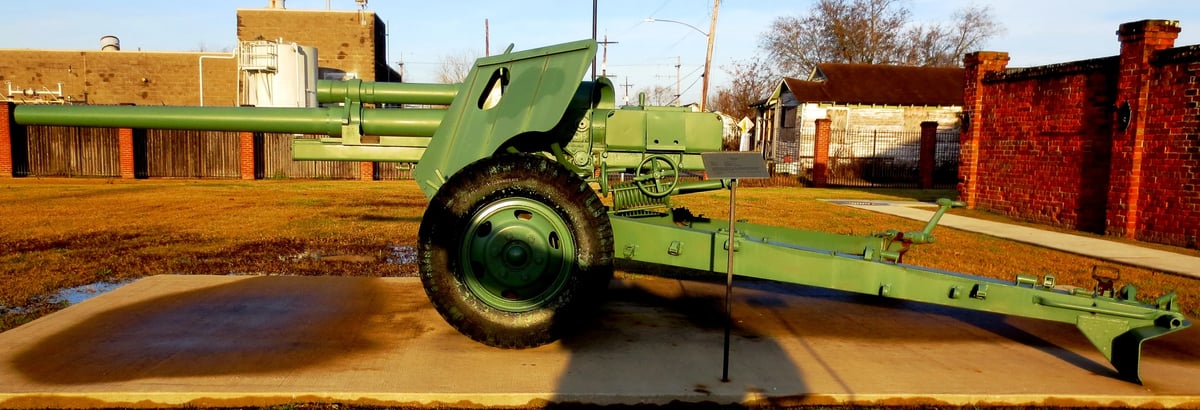
(Author Photo)

(Author Photo)
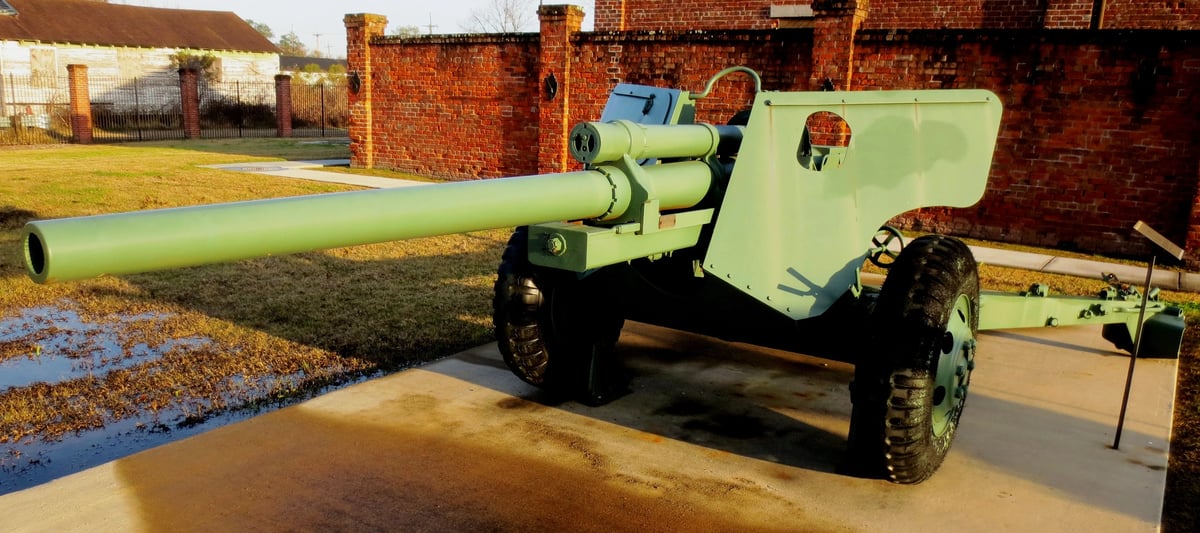
(Author Photo)
US M5 3-inch Anti-Tank Gun.
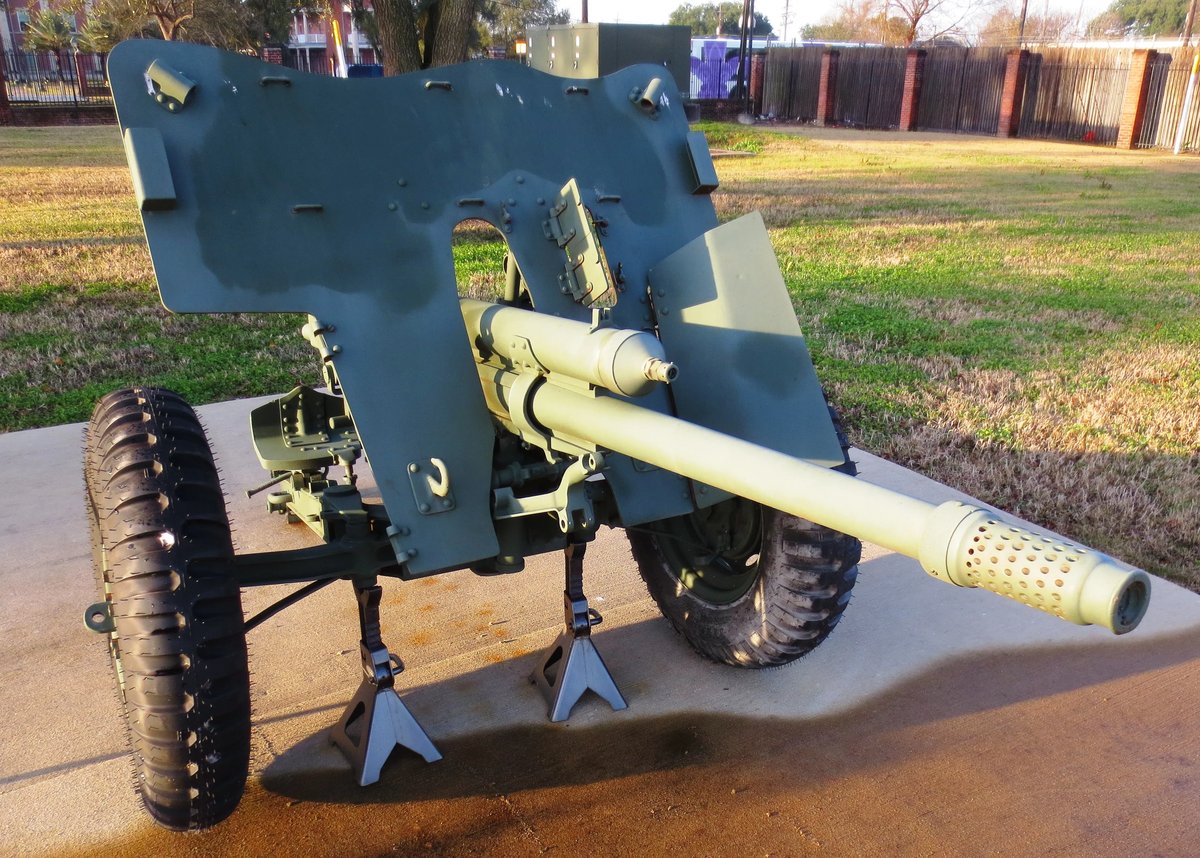
(Author Photo)

(Author Photo)
German Pak 37 (Czech) Skoda 37-mm Gun.
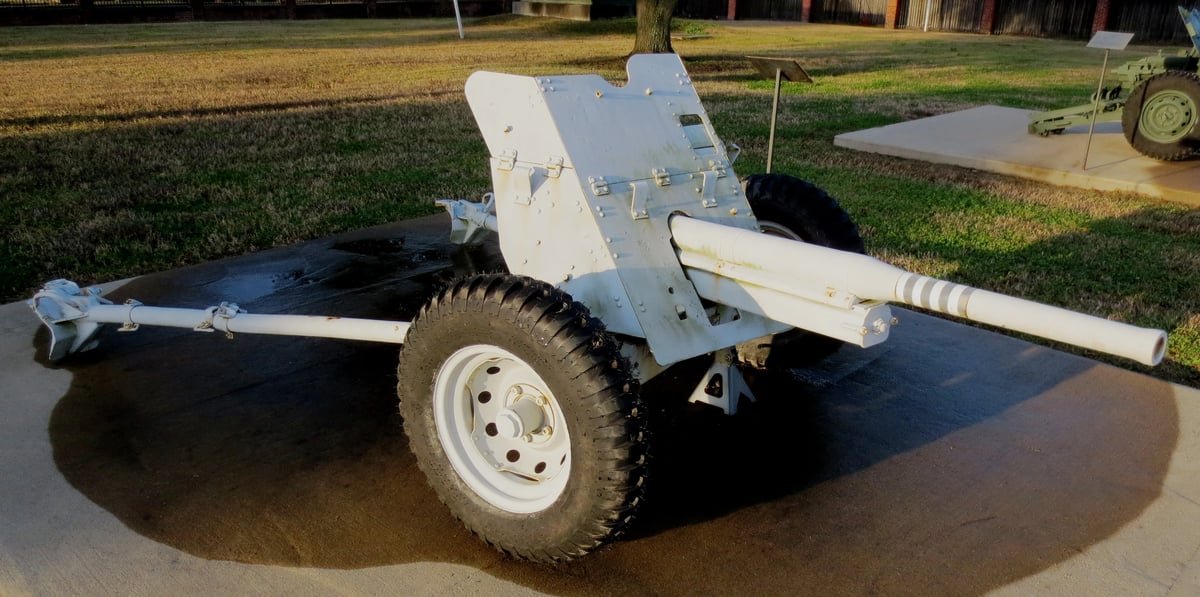
(Author Photo)
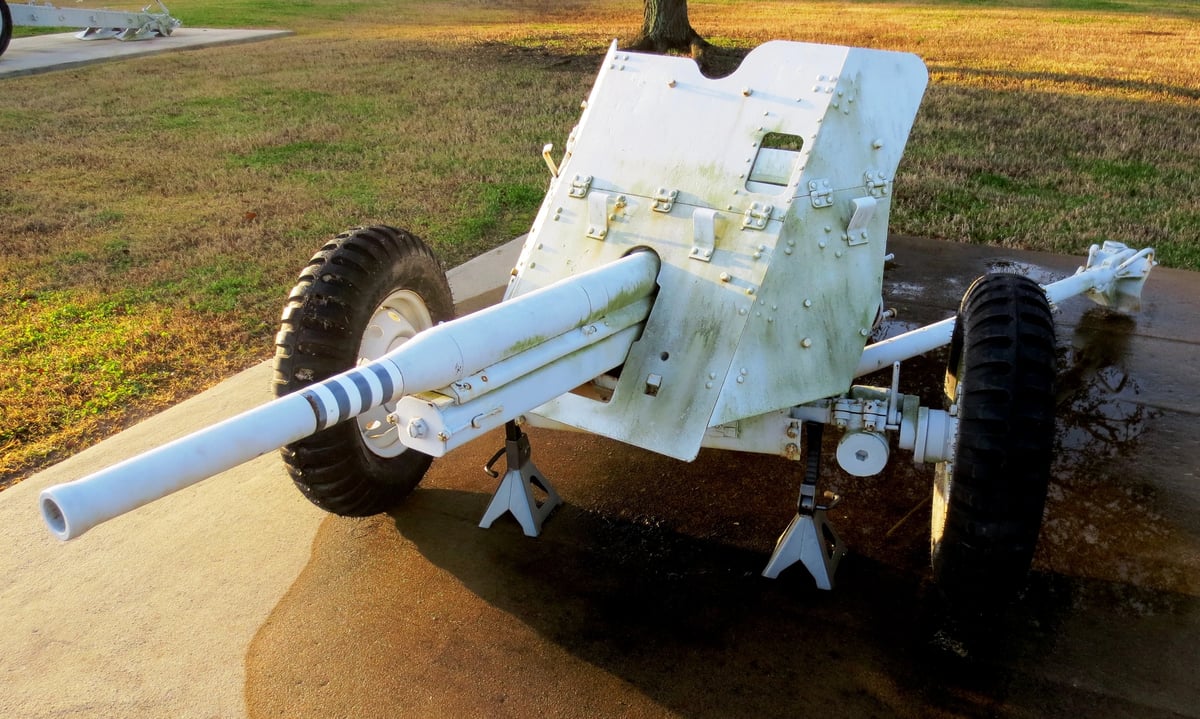
(Author Photo)
Soviet M1937 45-mm Anti-tank Gun.
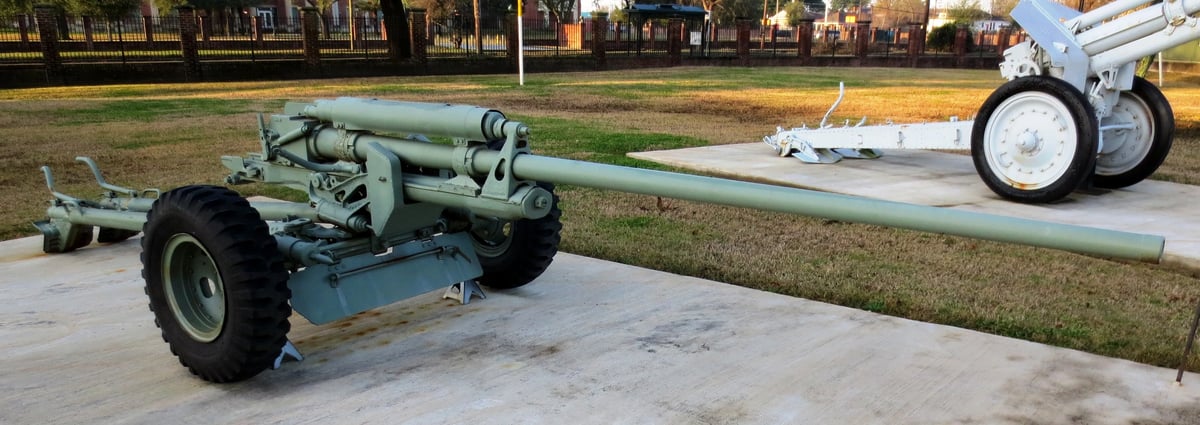
(Author Photo)
Soviet Zis2 M1943 57-mm AT Gun.
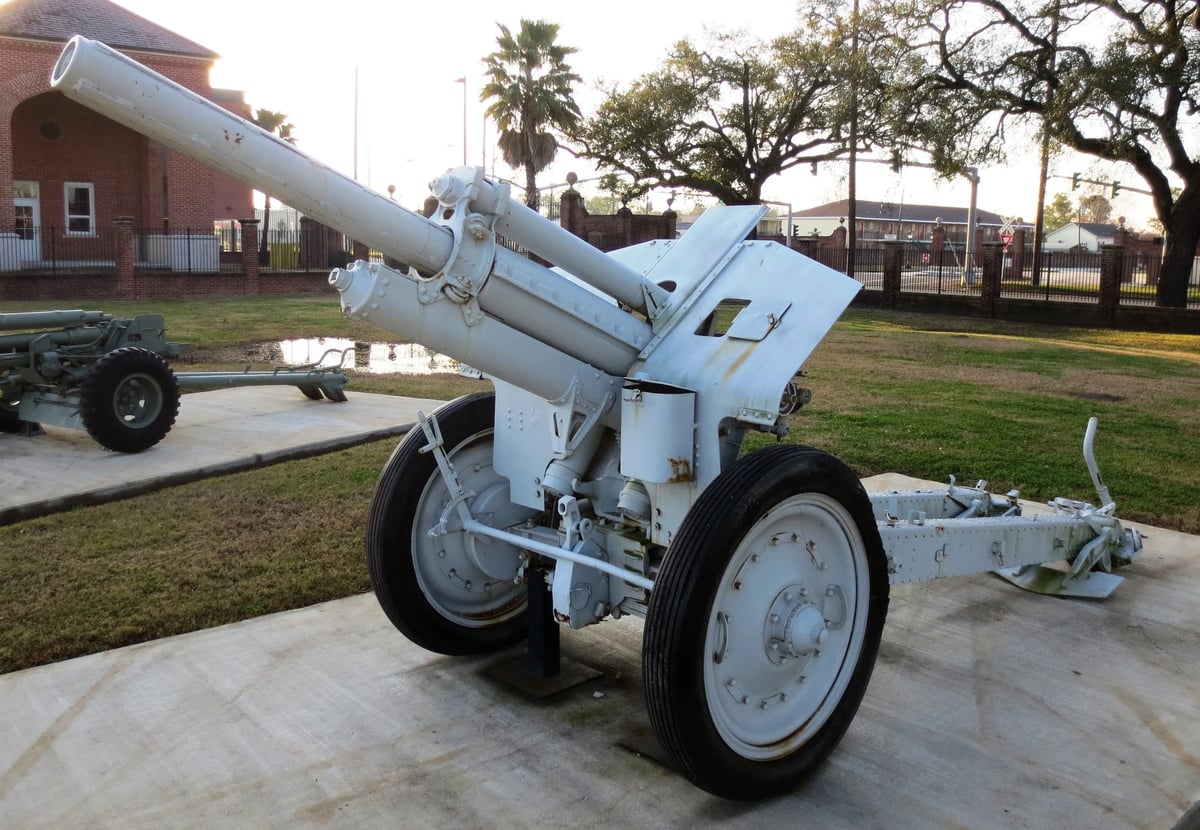
(Author Photo)
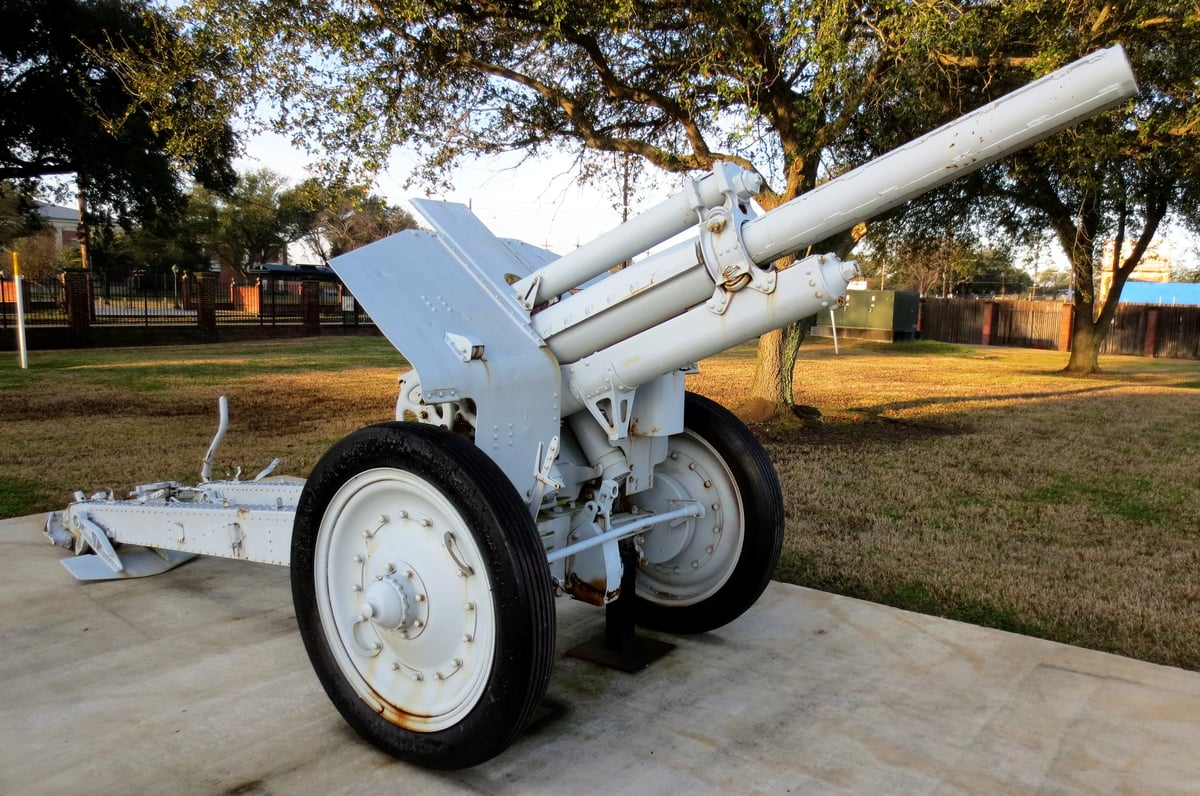
(Author Photo)
Soviet M28 (M30) 122-mm Field Howitzer.

(Author Photo)

(Author Photo)
Soviet D-30 122-mm towed Field Gun.
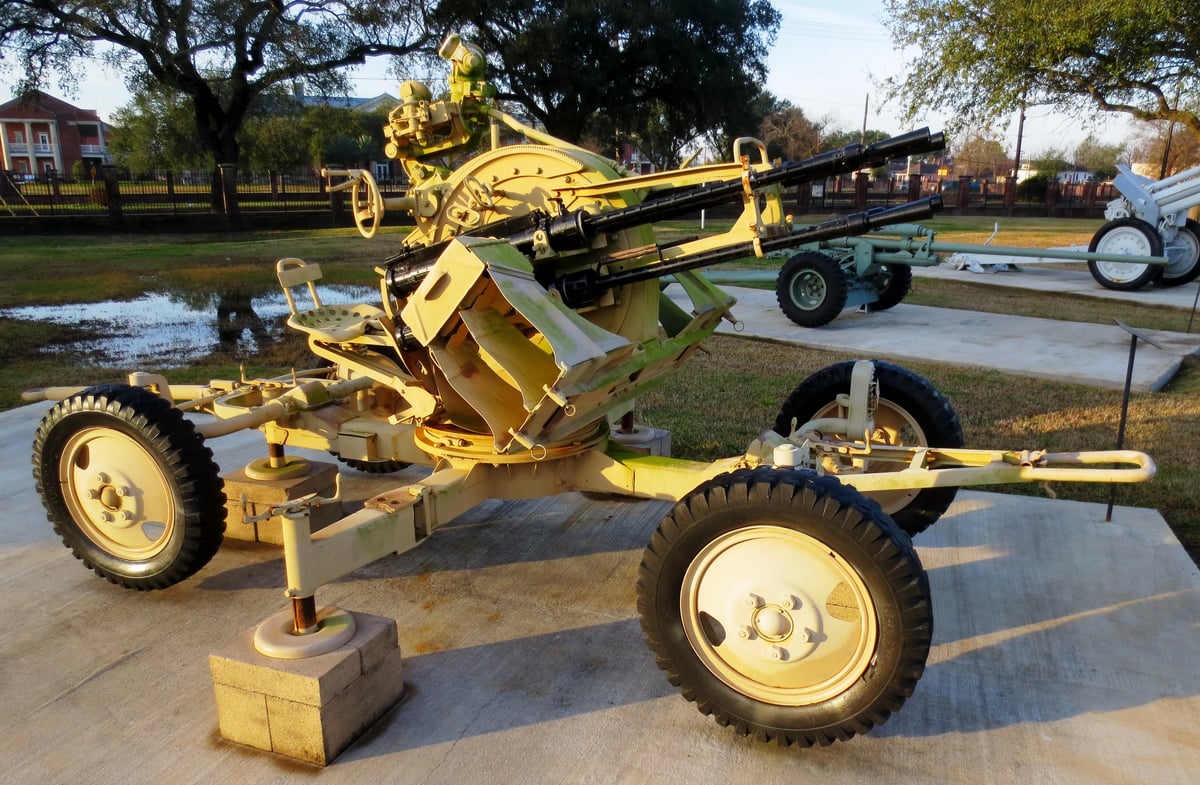
(Author Photo)

(Author Photo)
Soviet ZPU-4 14.5-mm AA Gun (Iraq).
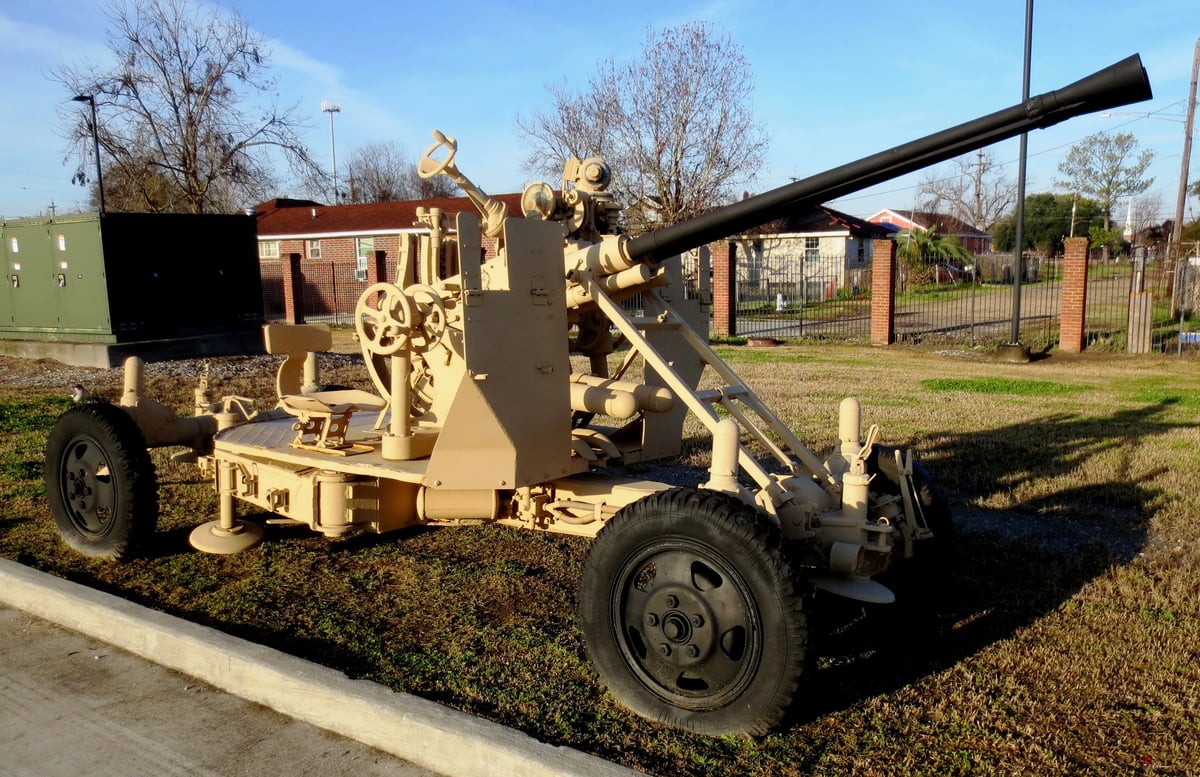
(Author Photo)
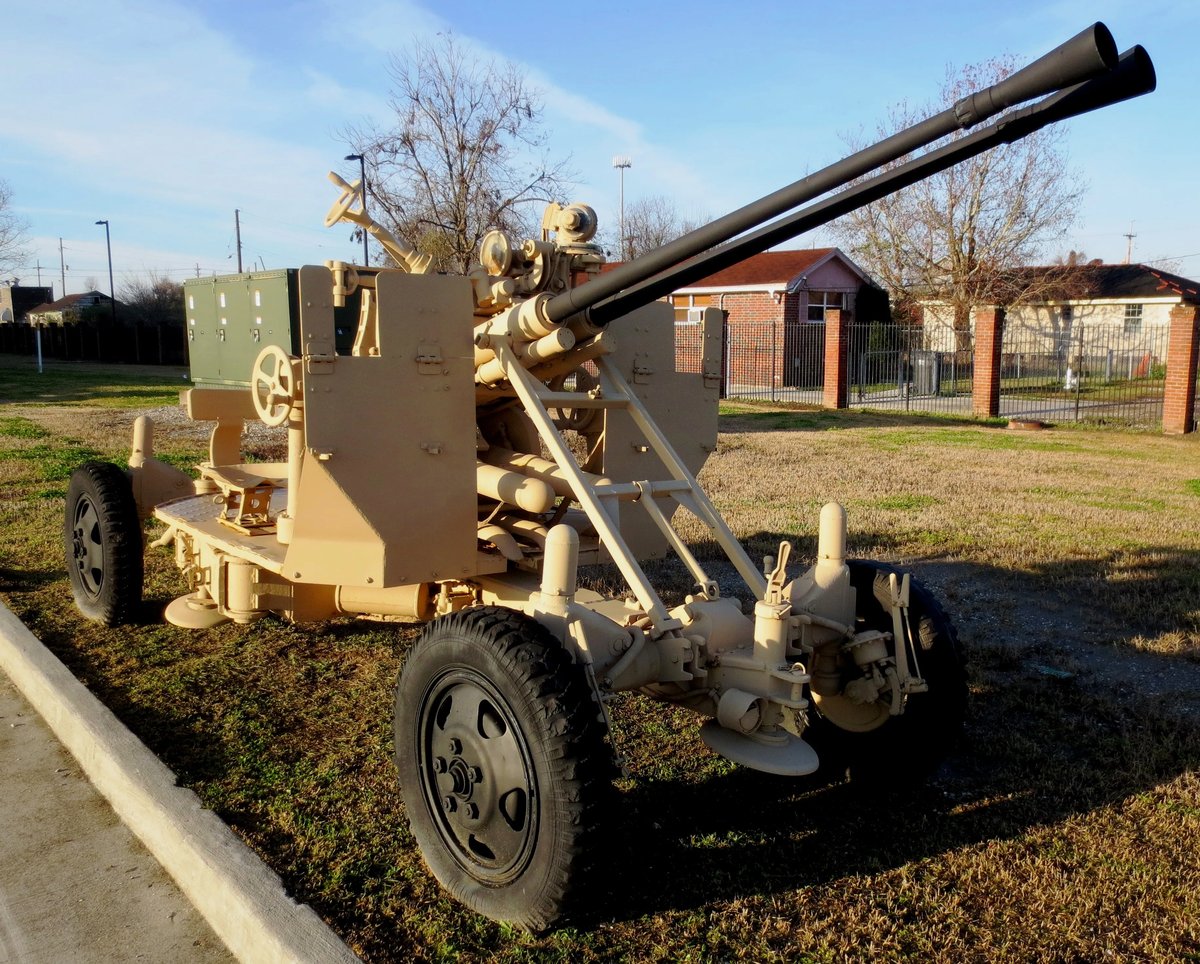
(Author Photo)
Chinese Type 74 37-mm Twin AA Gun (copy of a Soviet M1939), (Iraq).

(Author Photo)
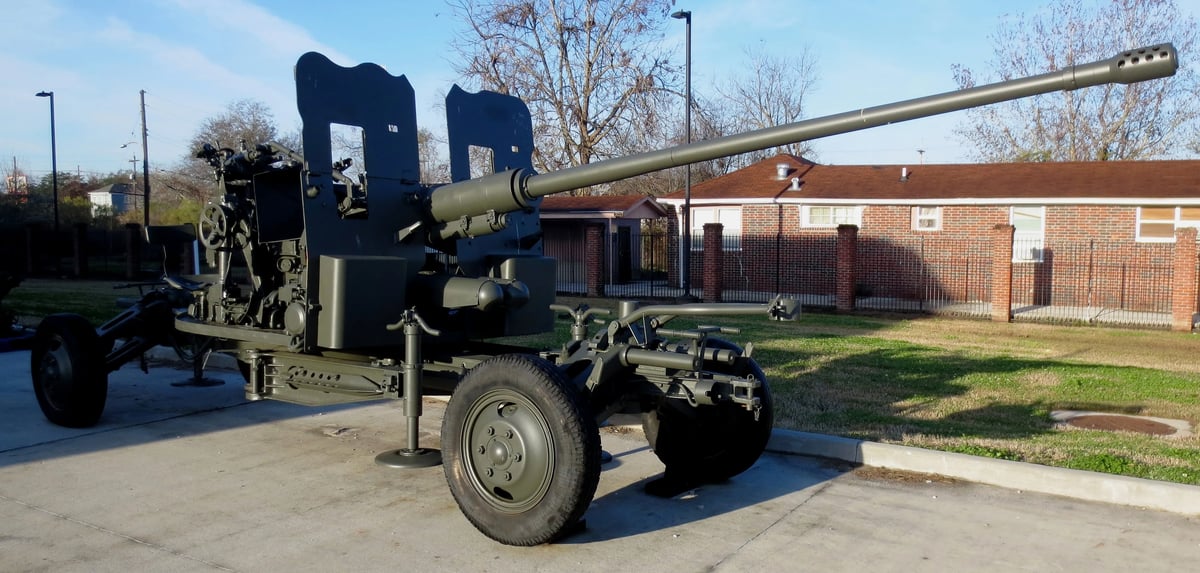
(Author Photo)
Soviet S-60 57-mm AA Gun.
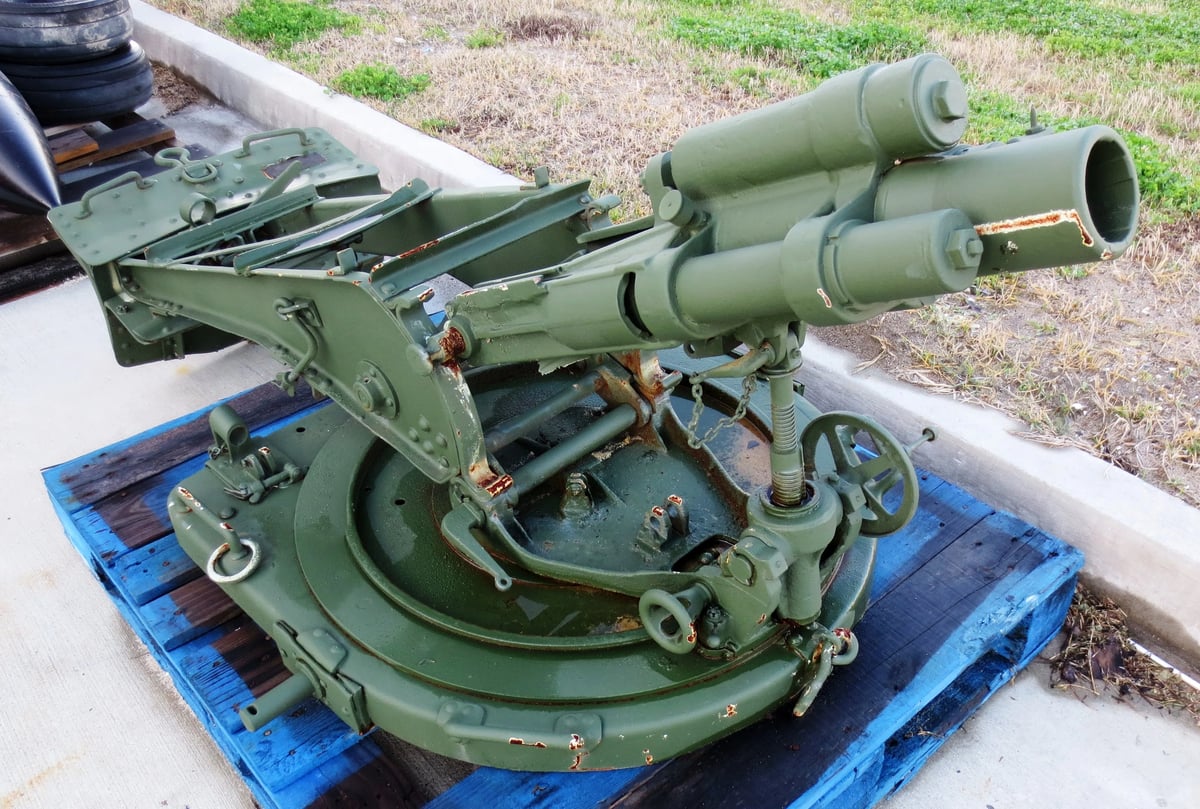
(Author Photo)

(Author Photo)
German First World War 7.58-cm leichtes Minenwerfer neuer Art, (7.58-cm leMW), (Serial Nr. 10852).

(Author Photo)
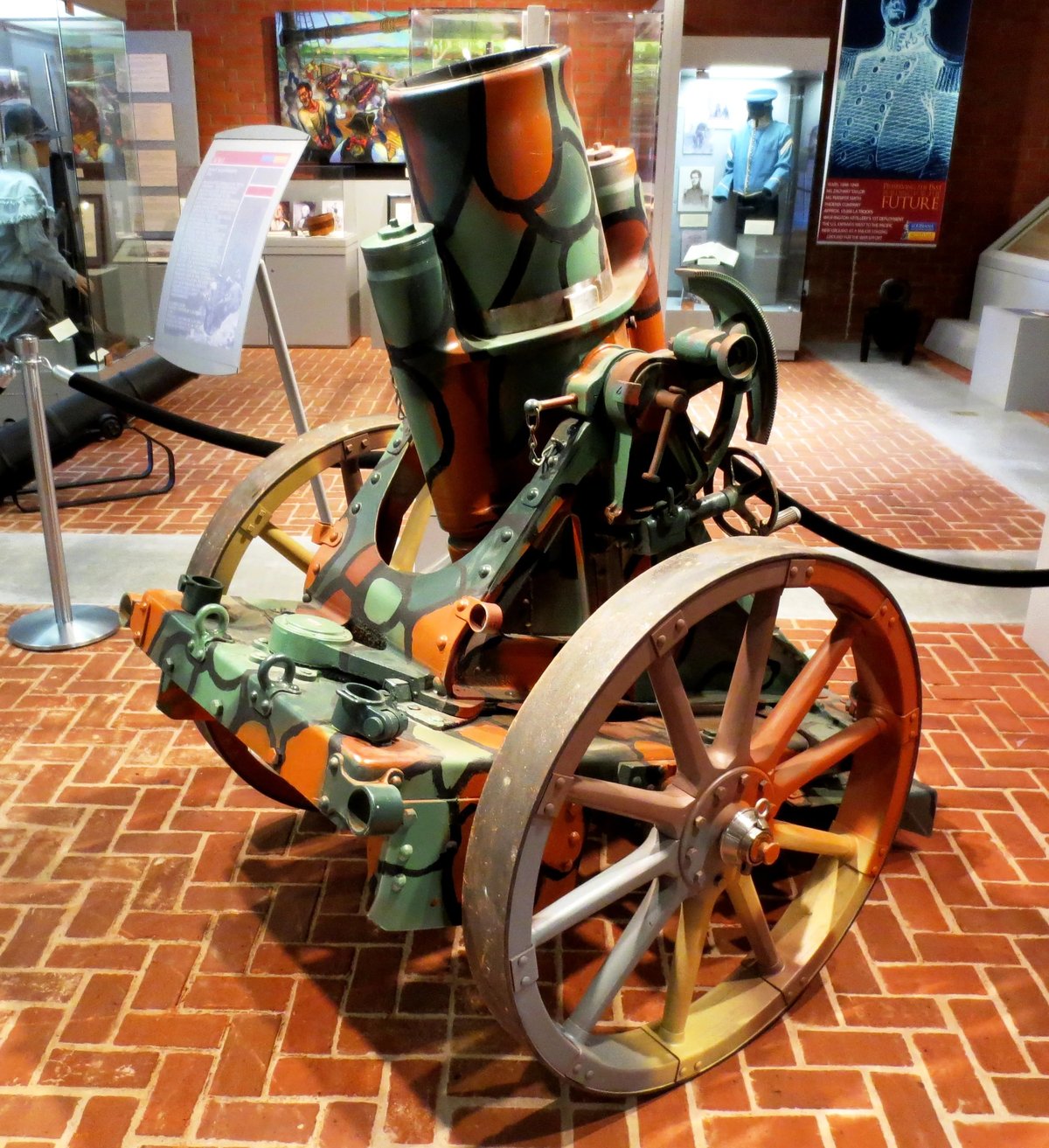
(Author Photo)
German First World War 17-cm mittlerer Minenwerfer (17-cm mMW), (Serial Nr. --28),
Aviation
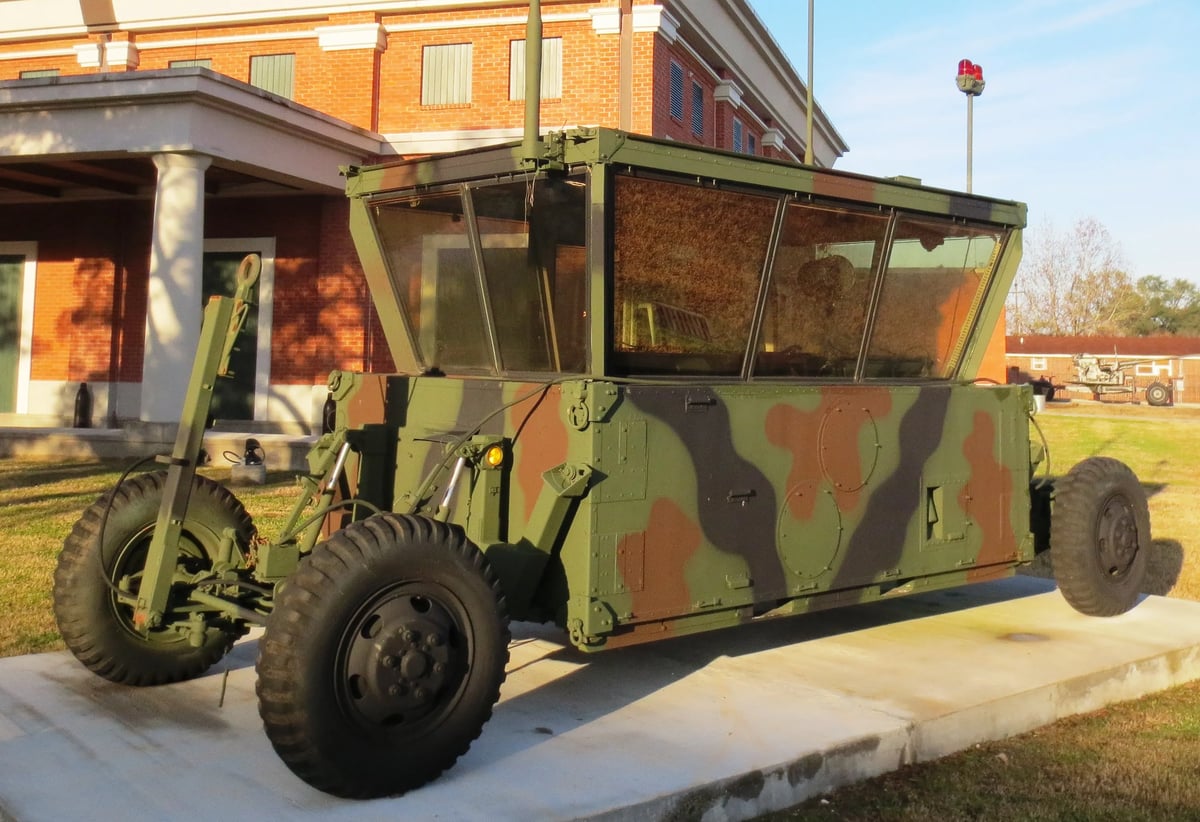
(Author Photo)
Mobile Air Traffic Control trailer.
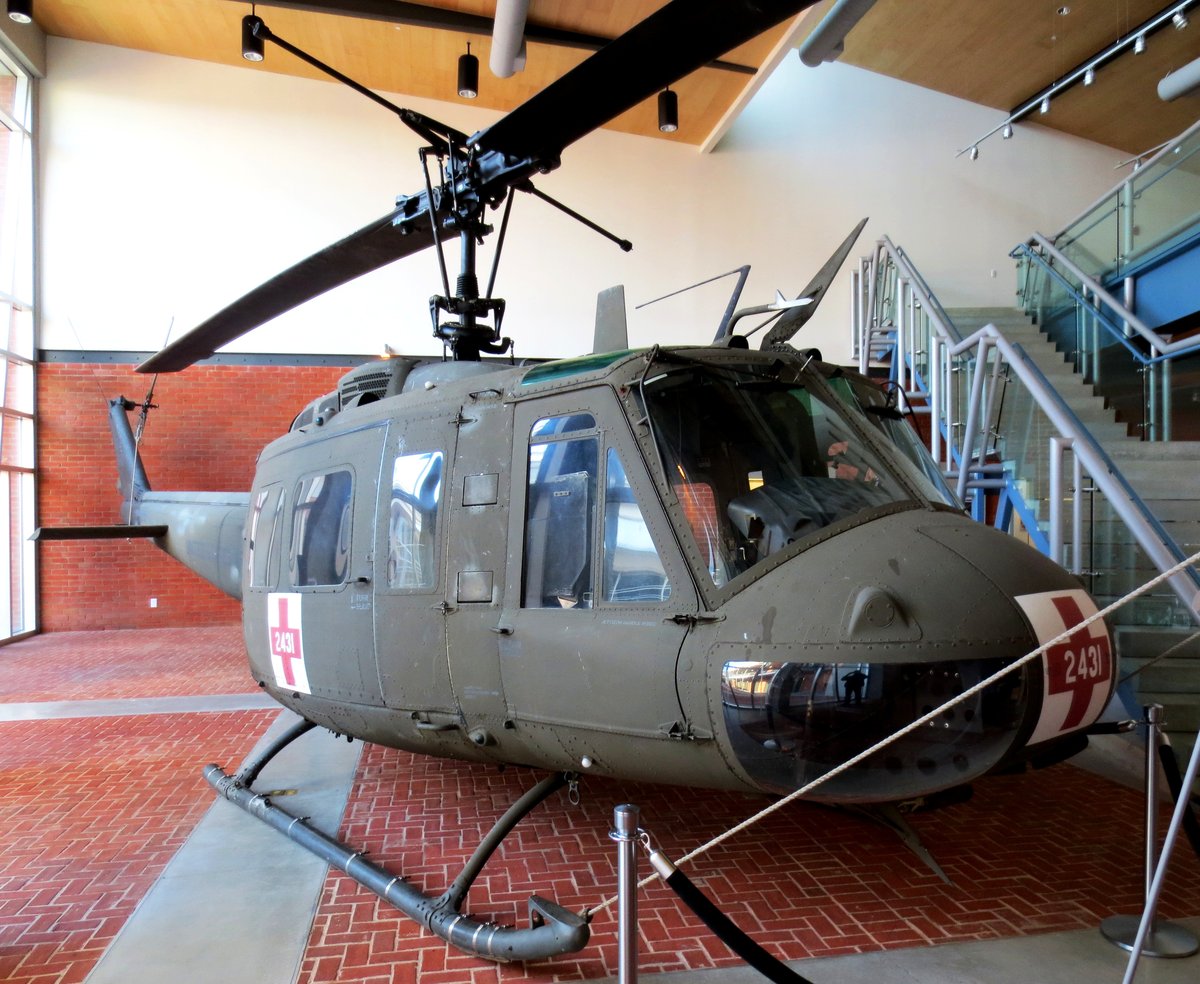
(Author Photo)
Bell UH-1H Iroquois helicopter (Serial No. 65-9911).
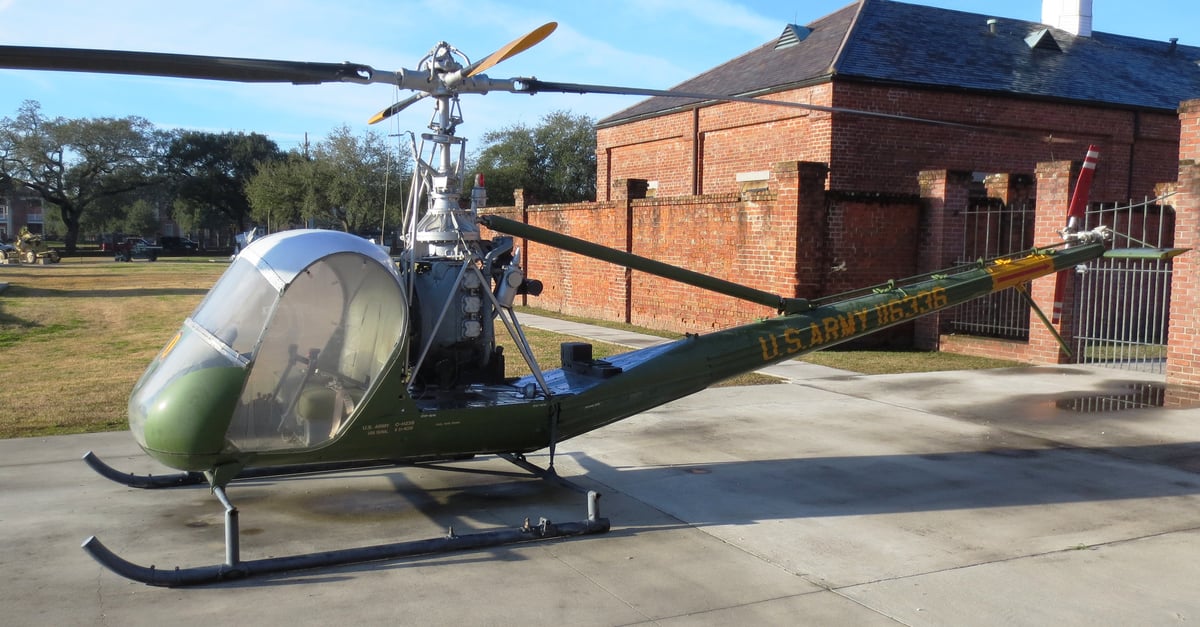
(Author Photo)
Hiller H-23B Raven helicopter (Serial No. 51-16336).
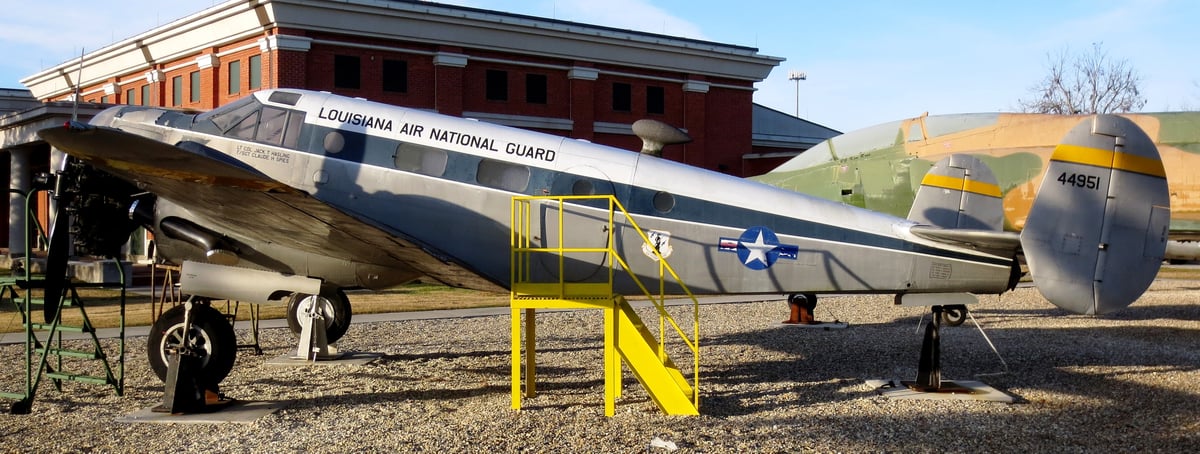
(Author Photo)
Beechcraft AT-11 Kansan (Serial No. 44-0951).
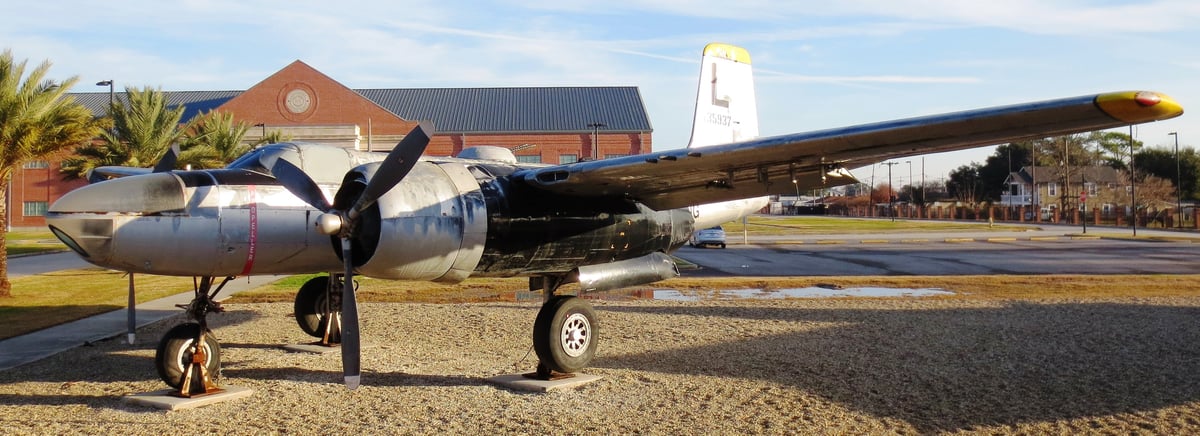
(Author Photo)
Douglas A-26C Invader (Serial No. 44-35937).

(Author Photo)
Convair YF-102 Delta Dagger, (Serial No. 63-1787).

(Author Photo)
Lockheed T-33A Shooting Star (Serial No. 53-4987).
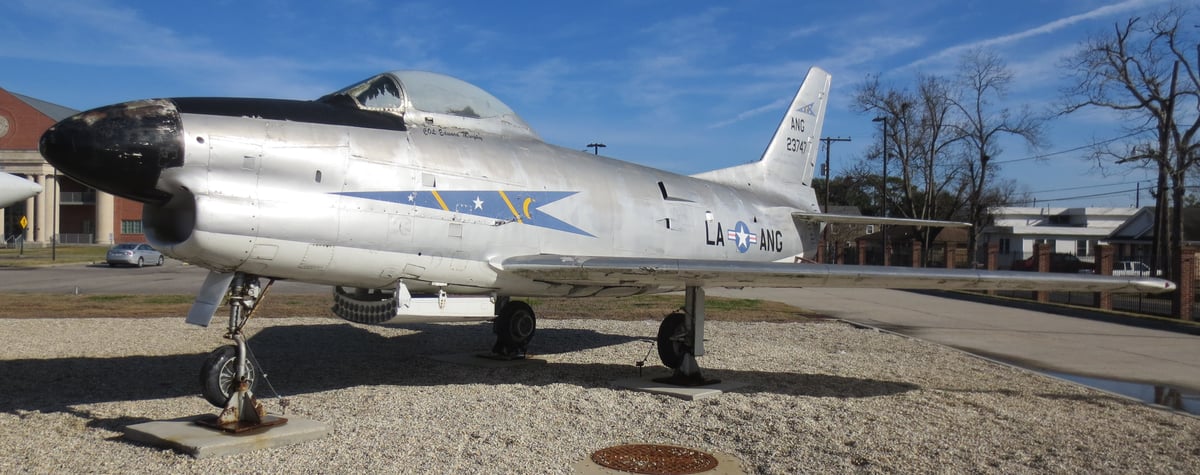
(Author Photo)
North American F-86D Sabre Dog (Serial No. 52-4168).

(Author Photo)
North American F-100D Super Sabre (Serial No. 56-3020).

(Author Photo)
McDonnell F-4C Phantom II nose section.
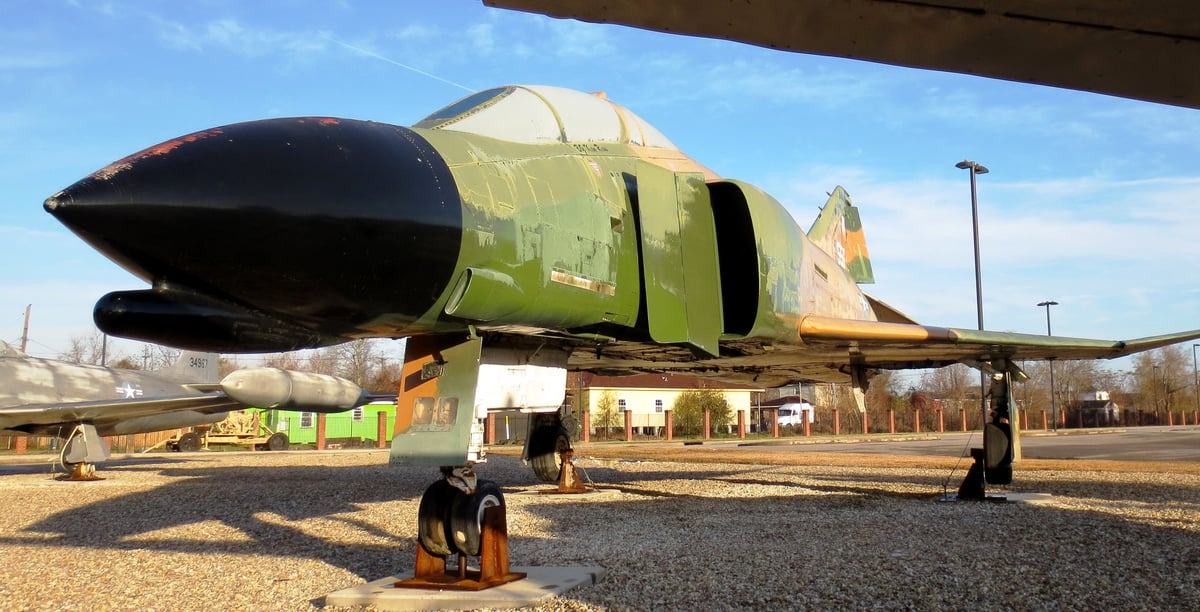
(Author Photo)
McDonnell Douglas F-4C Phantom II (Serial No. 63-7556).
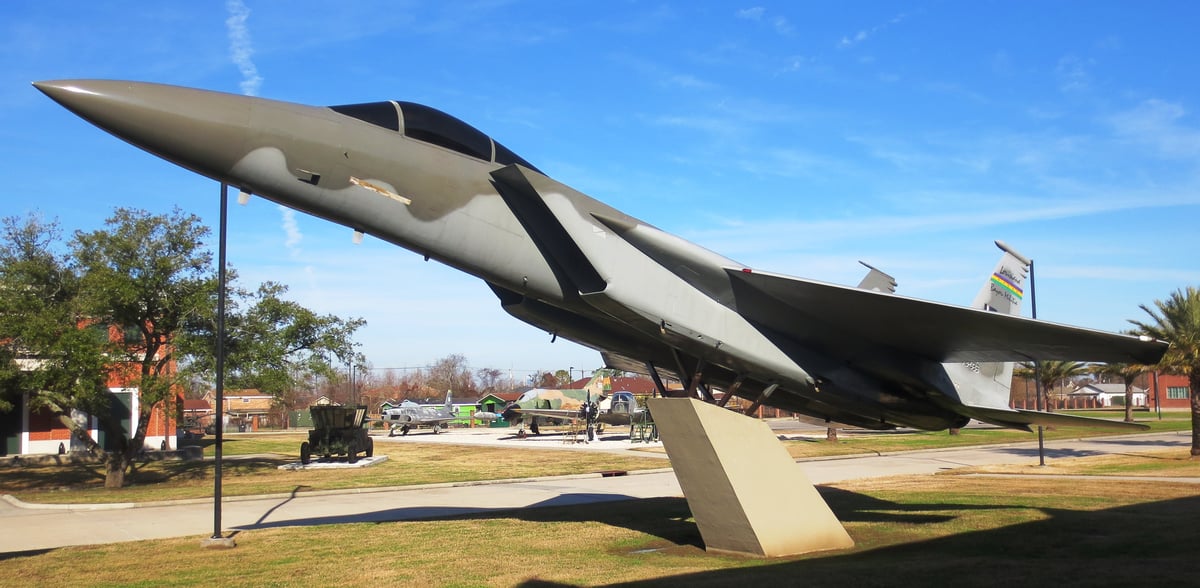
(Author Photo)
McDonnell Douglas F-15A Eagle (Serial No. 73-086).
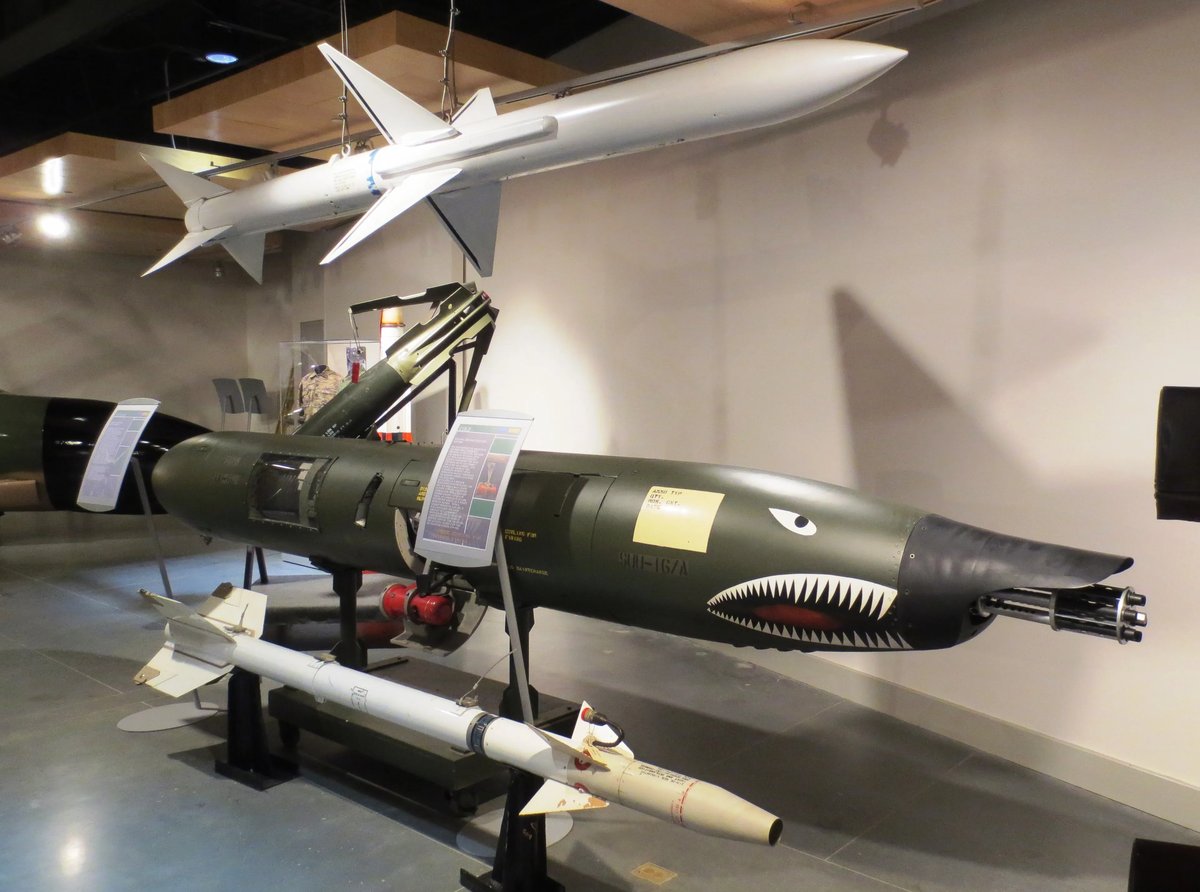
(Author Photo)
Aircraft weapons and missiles.





